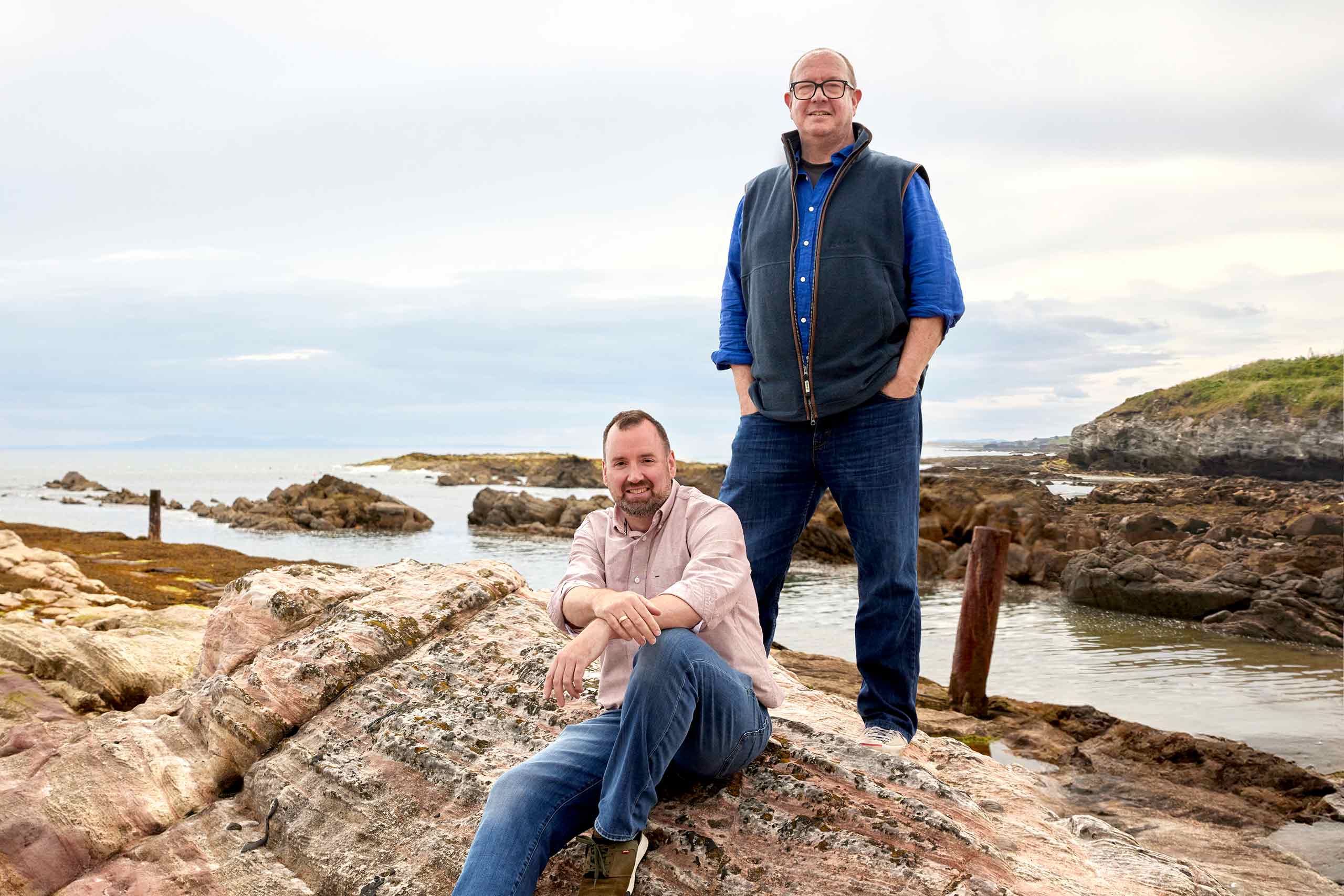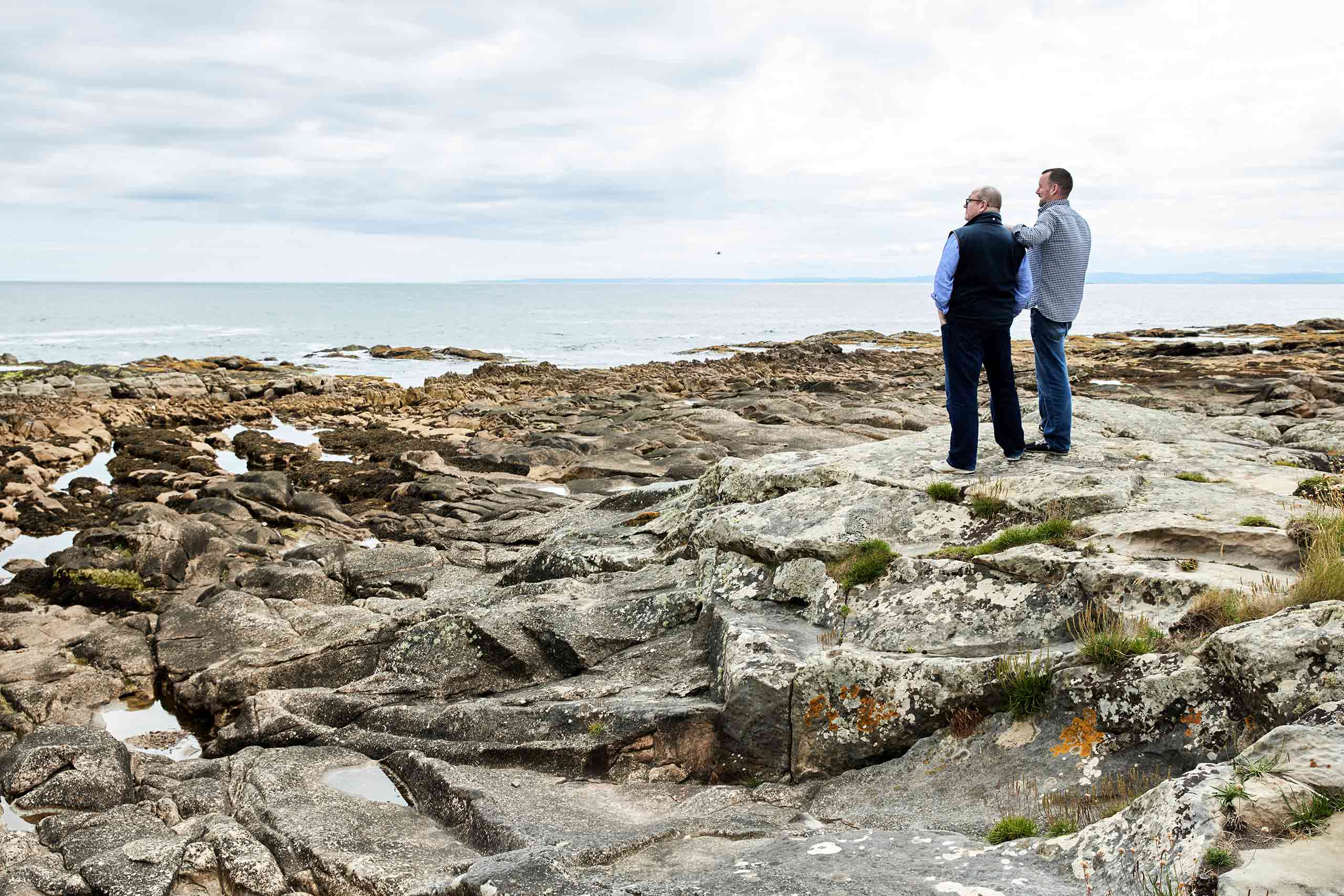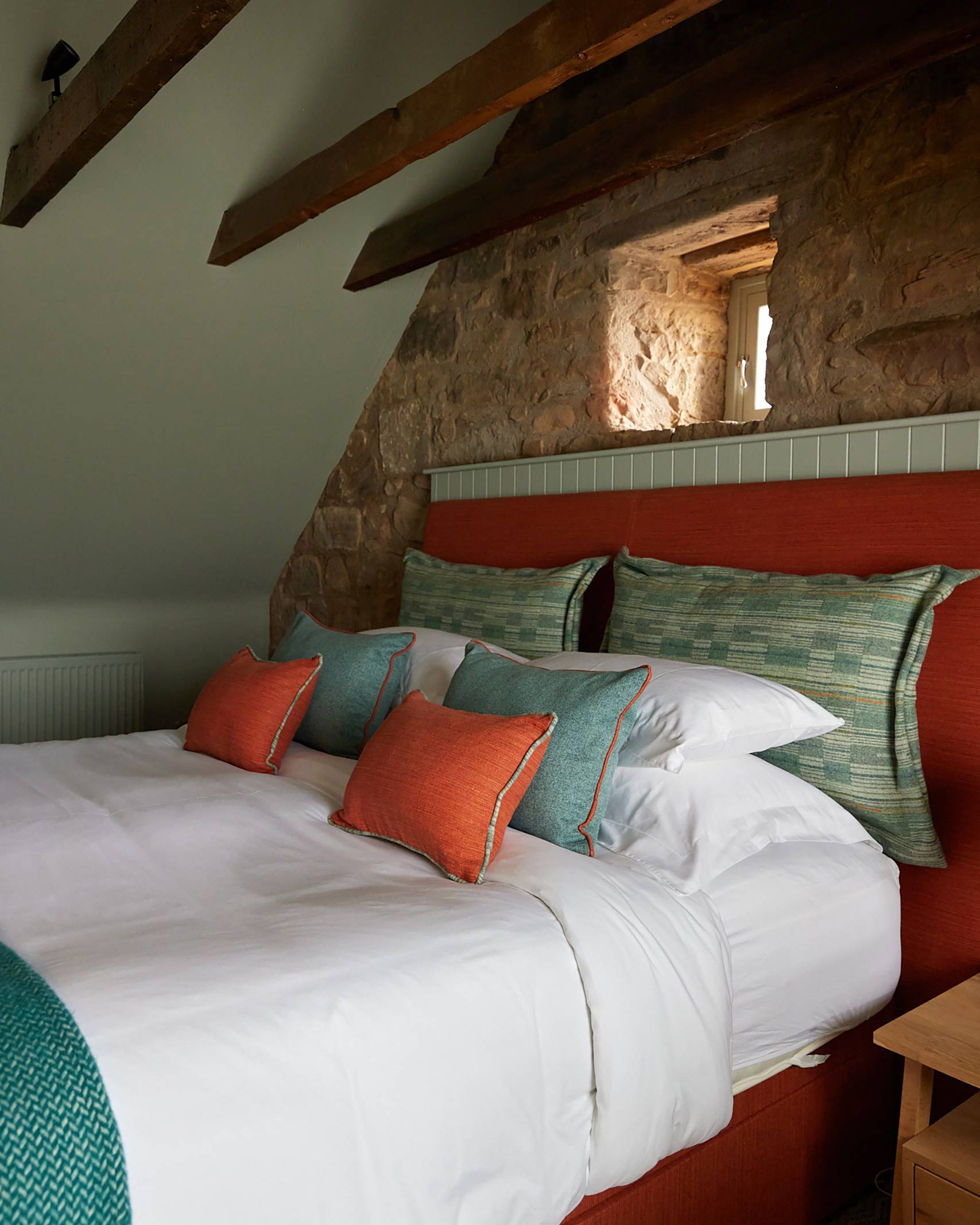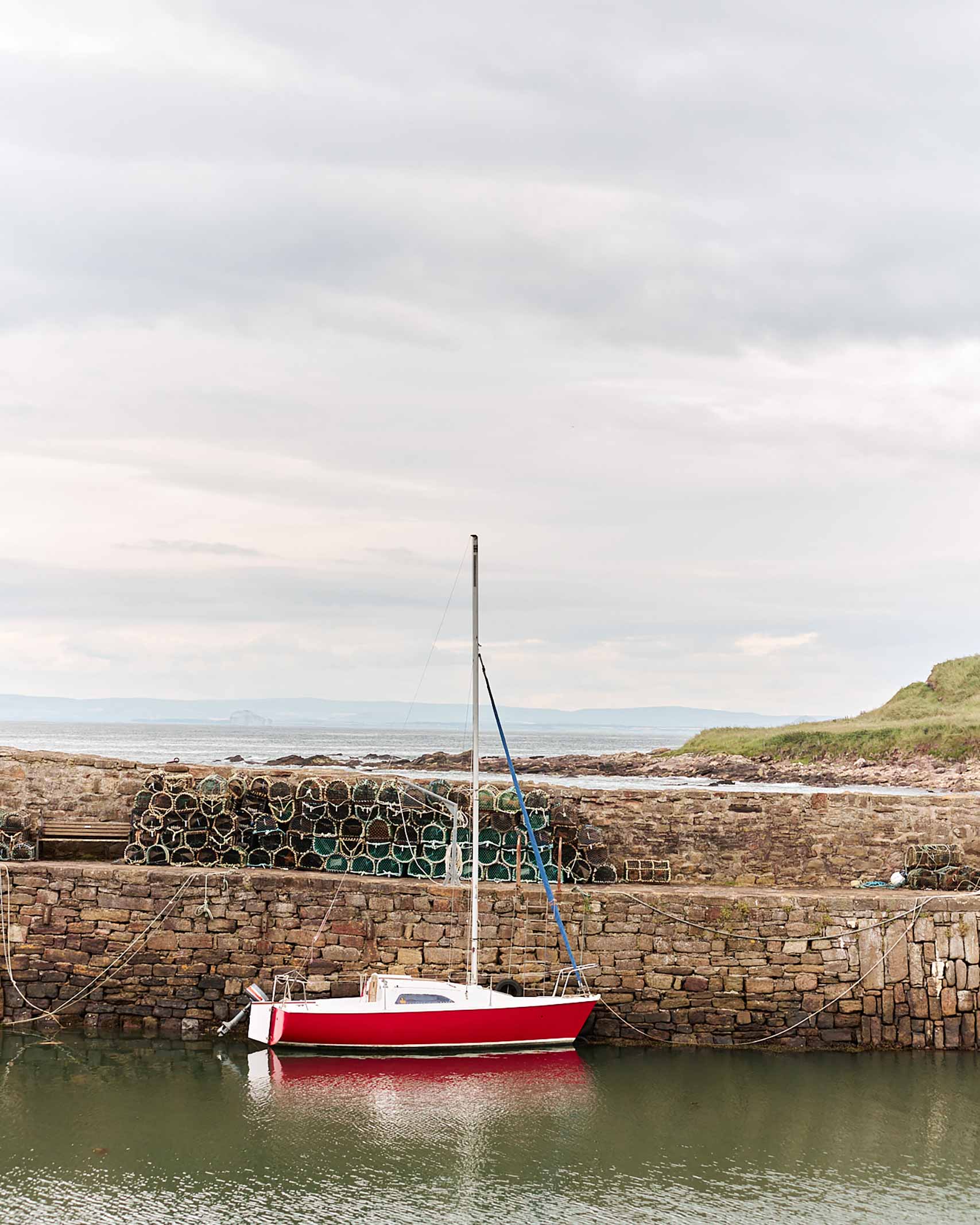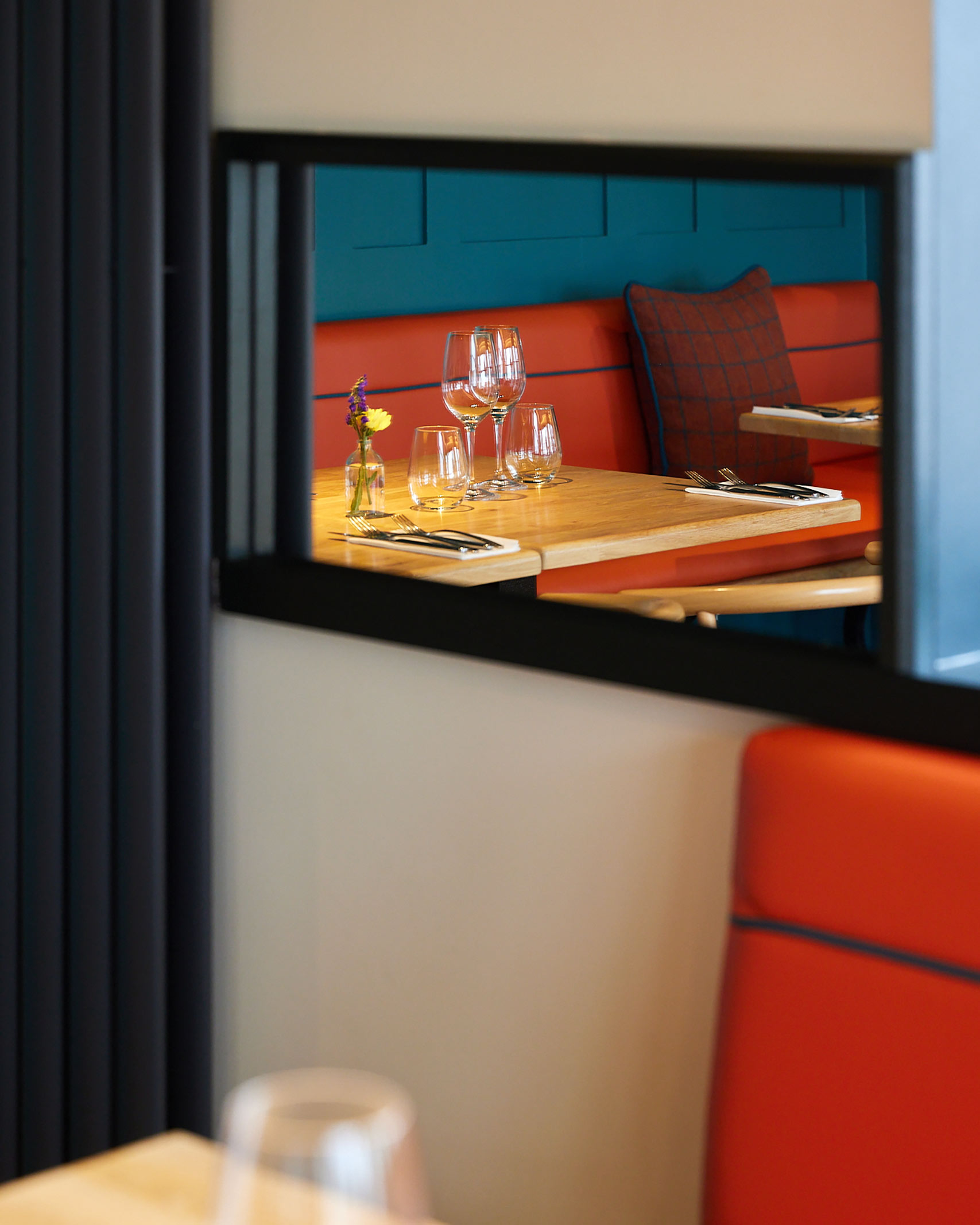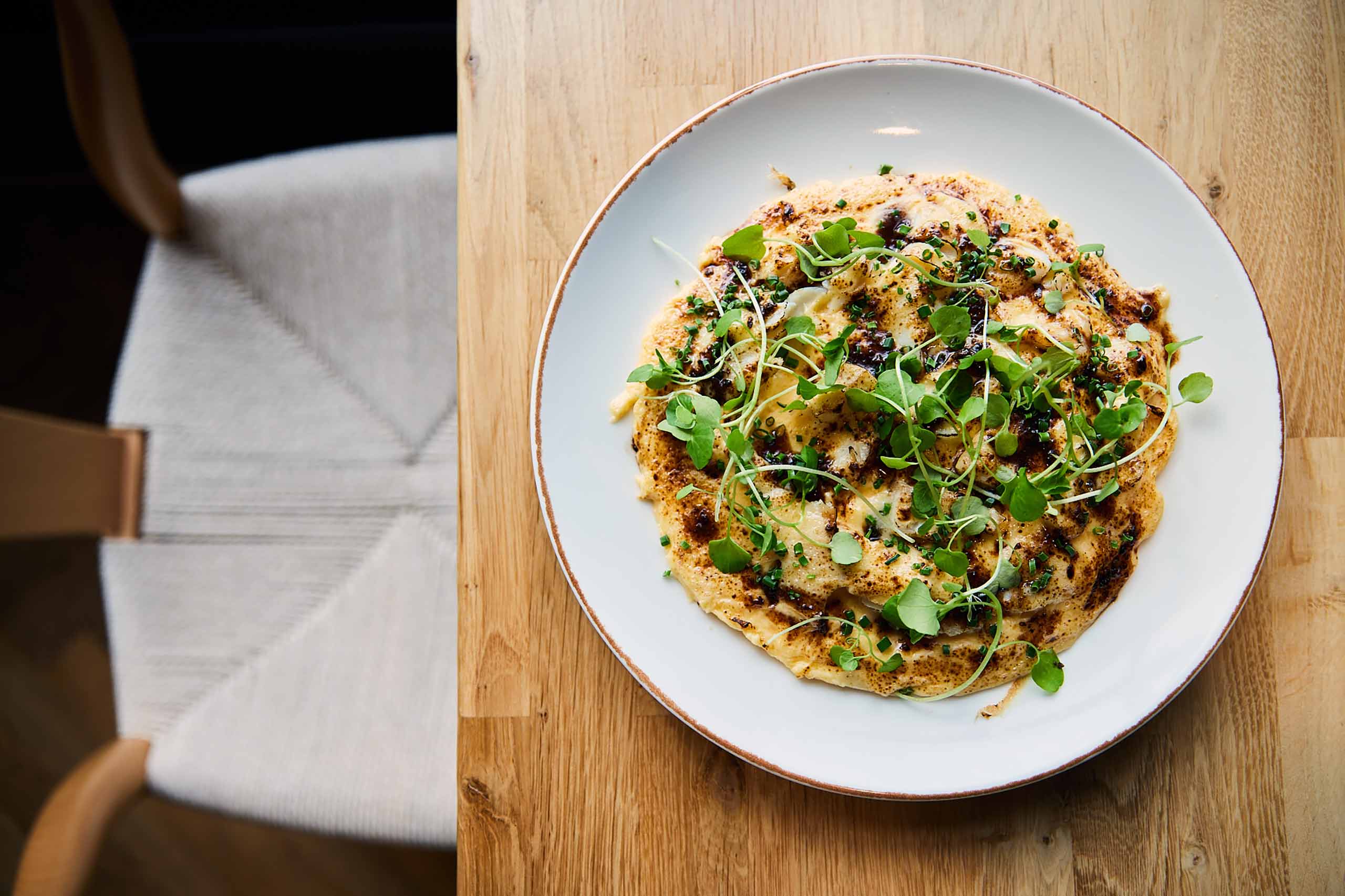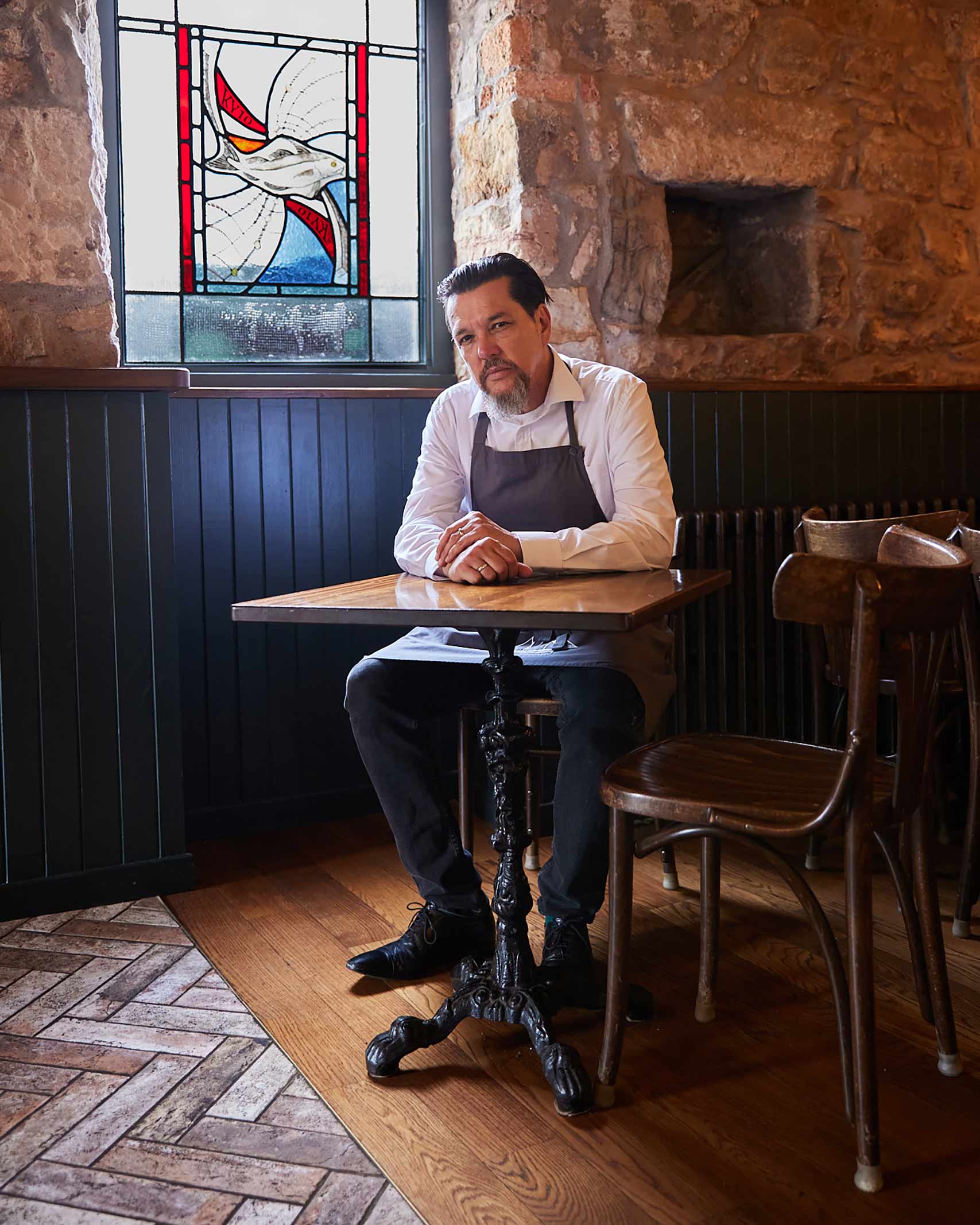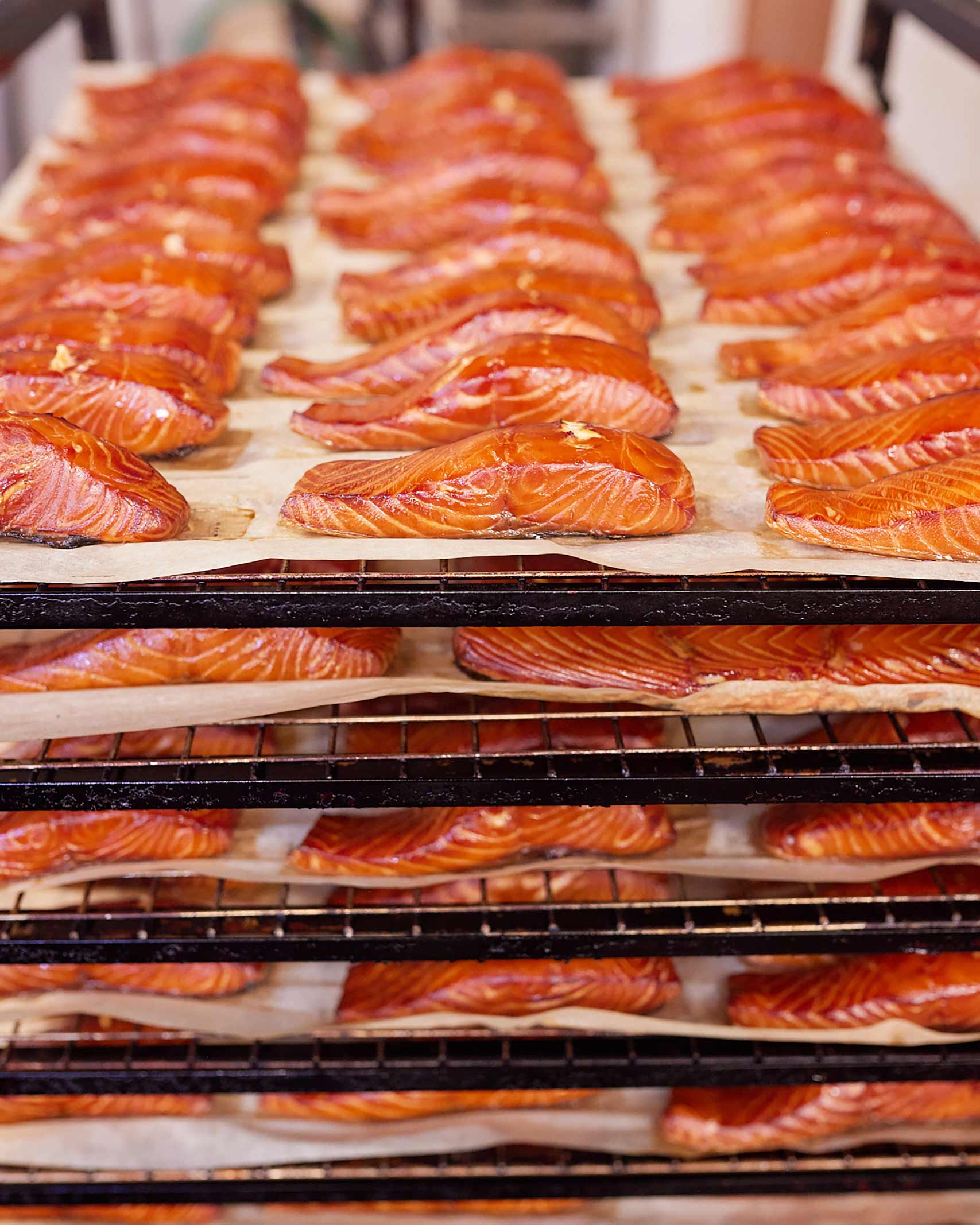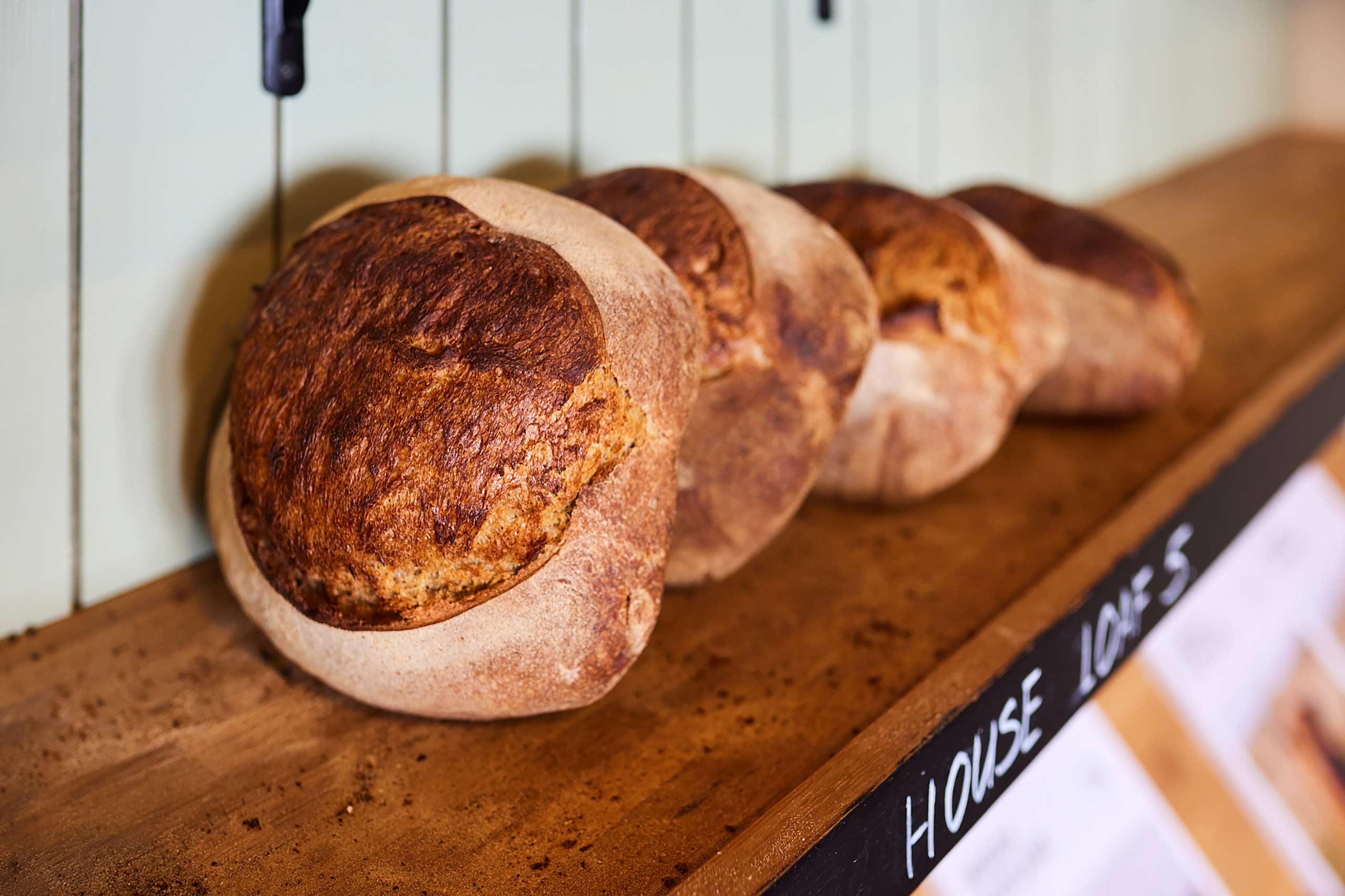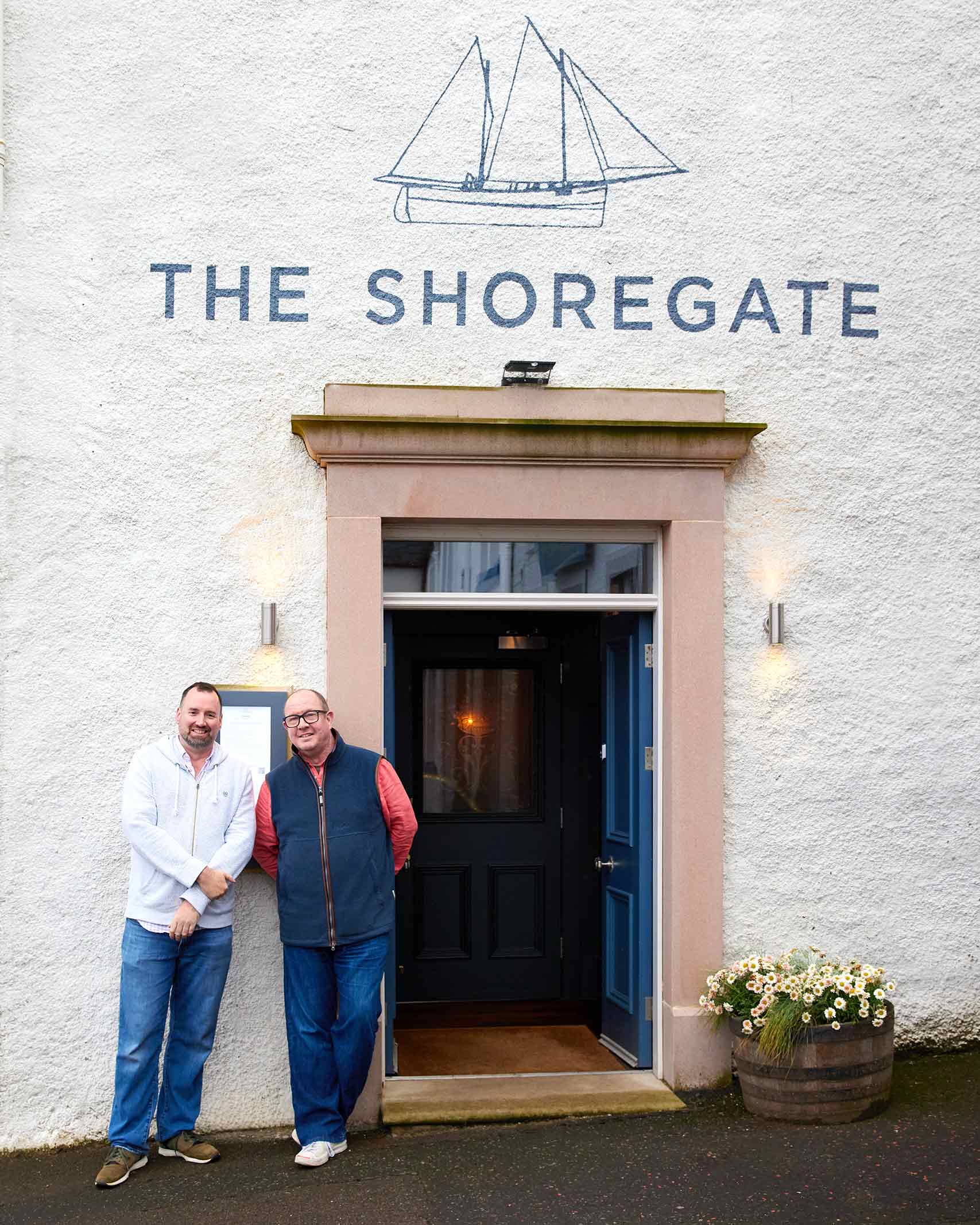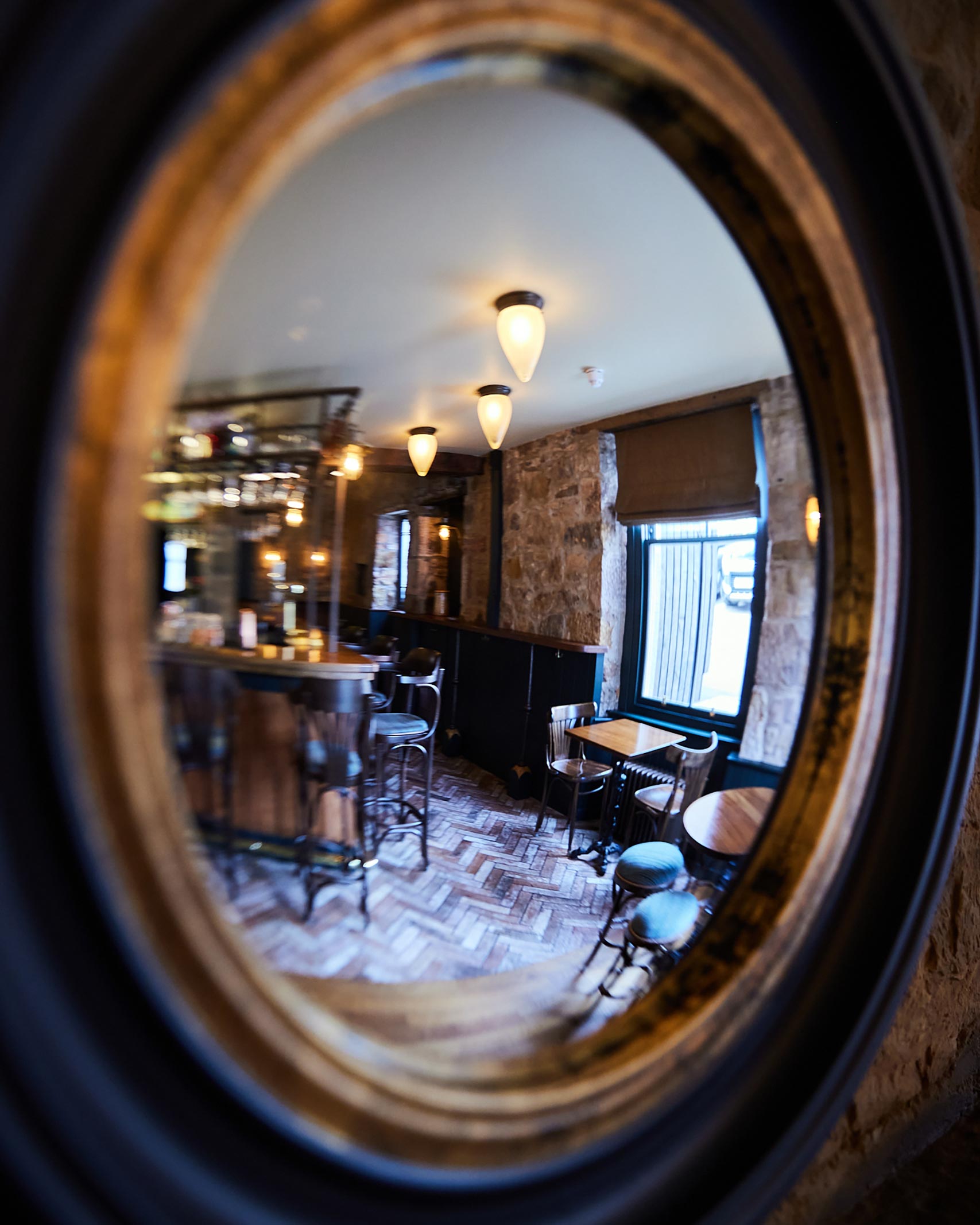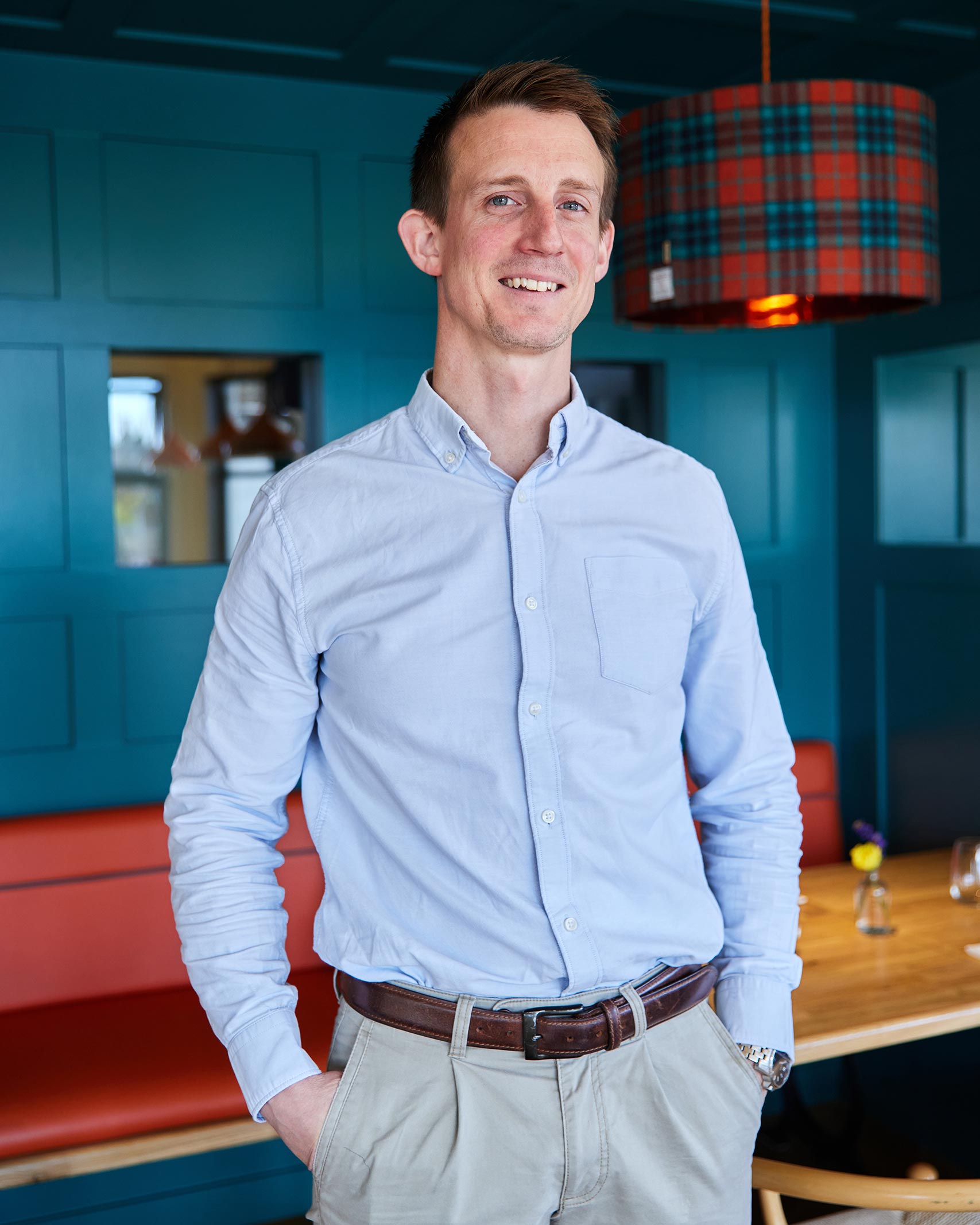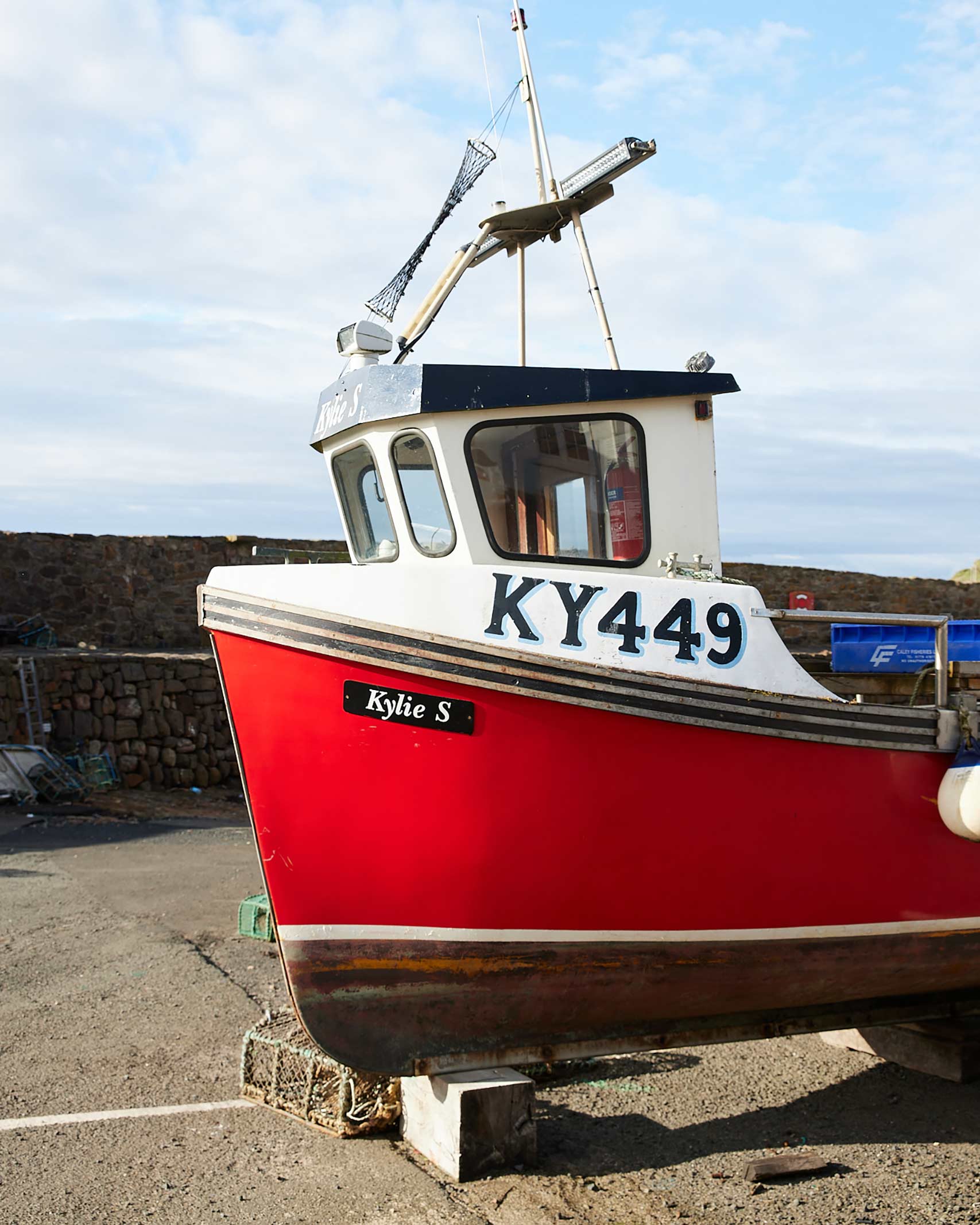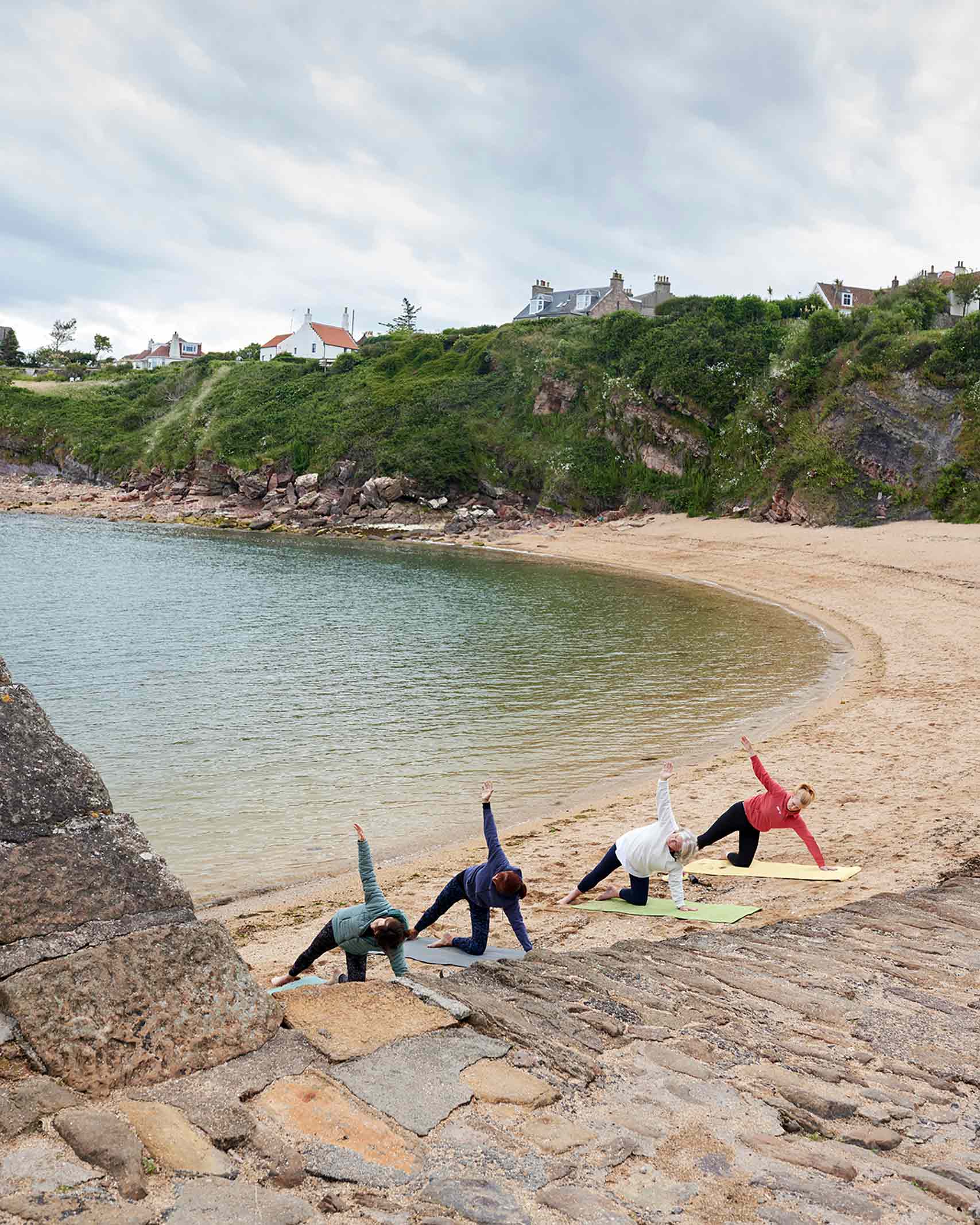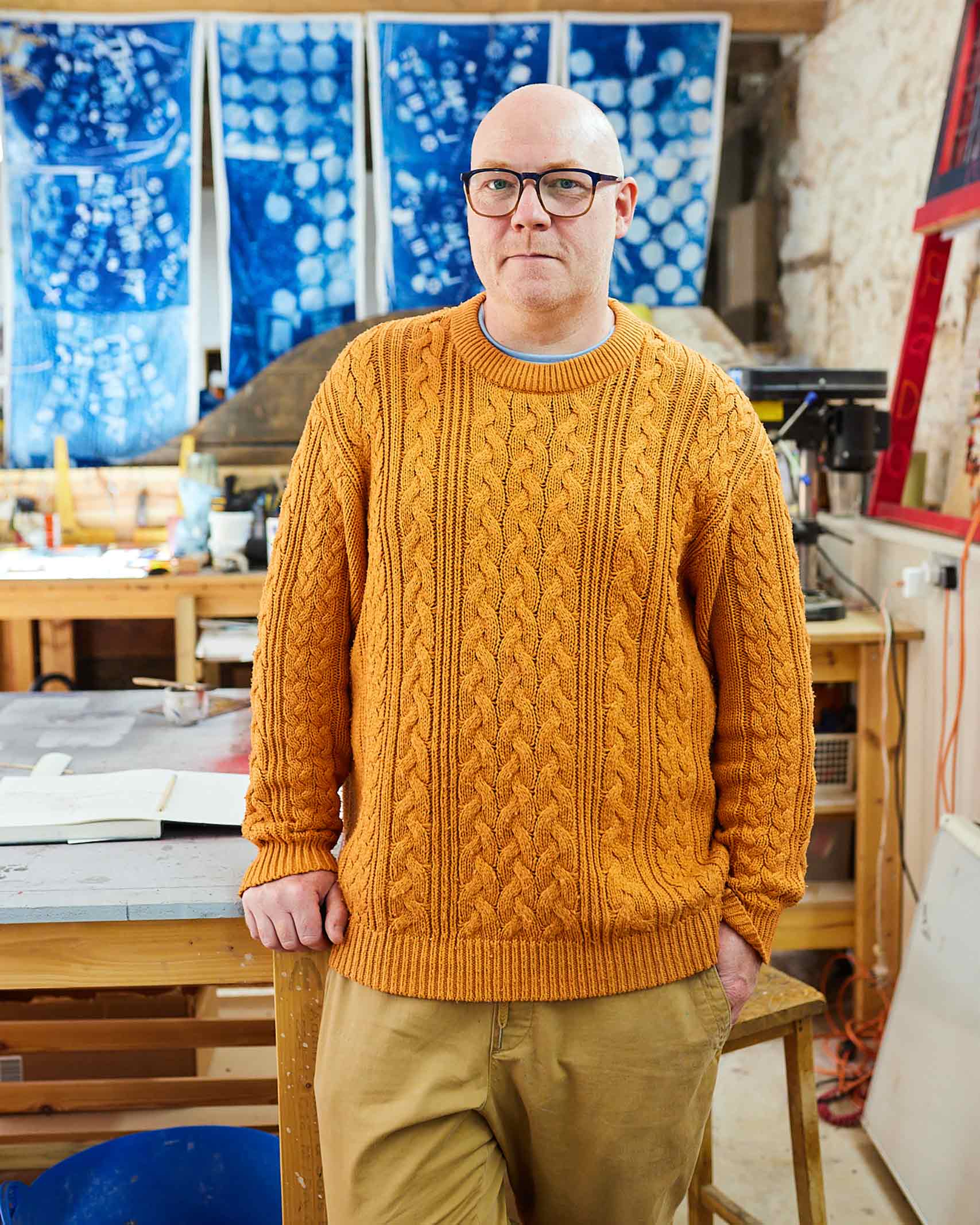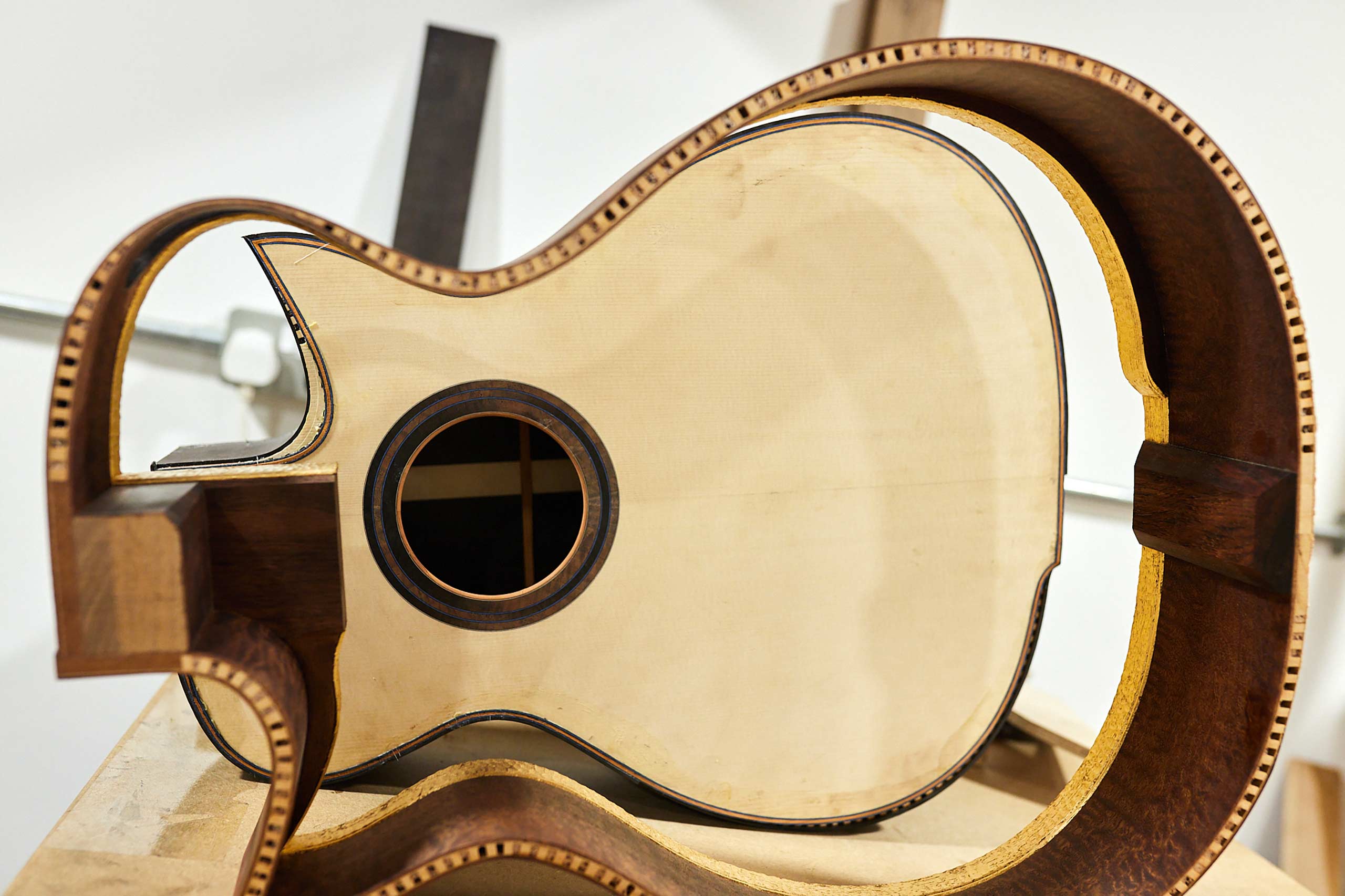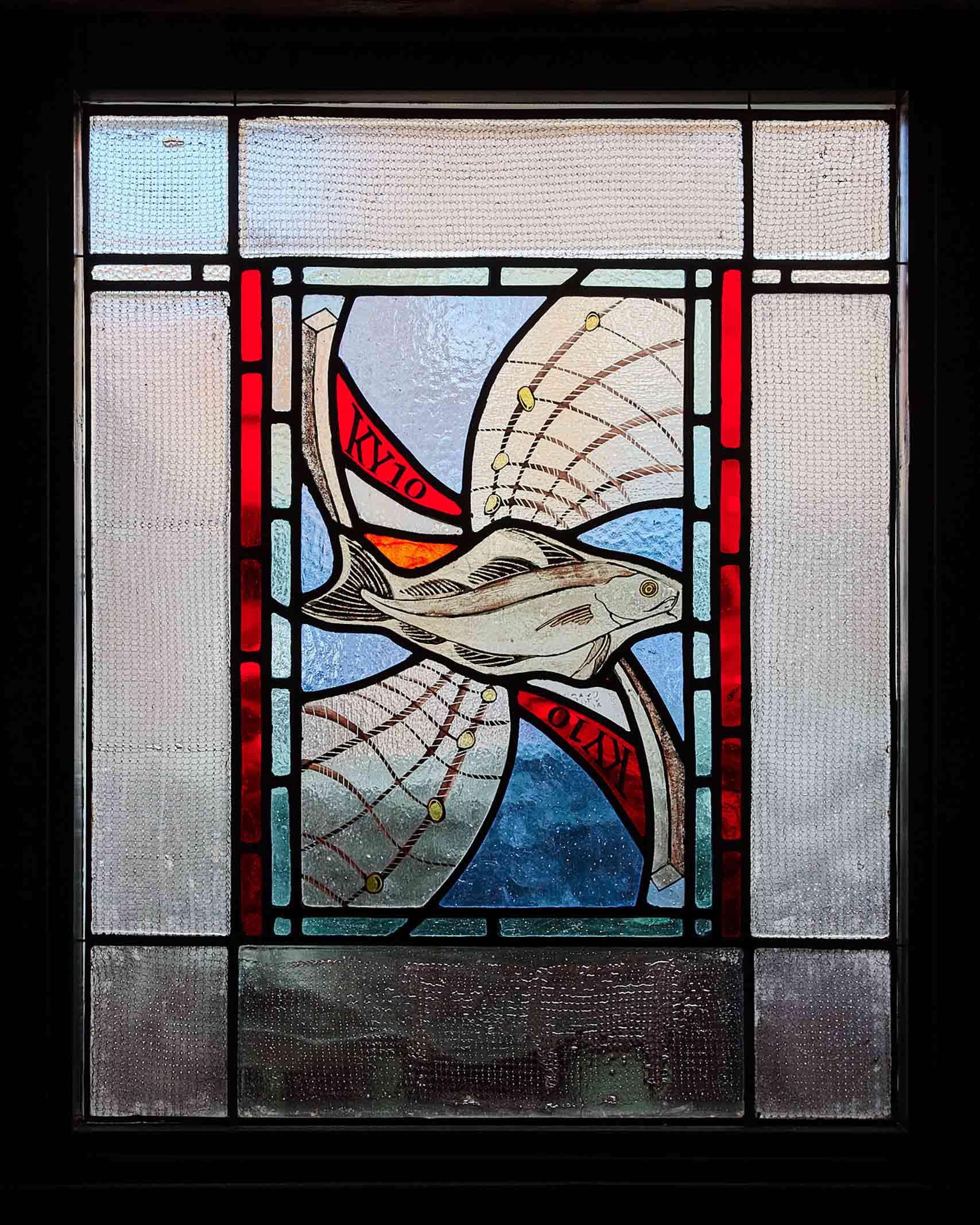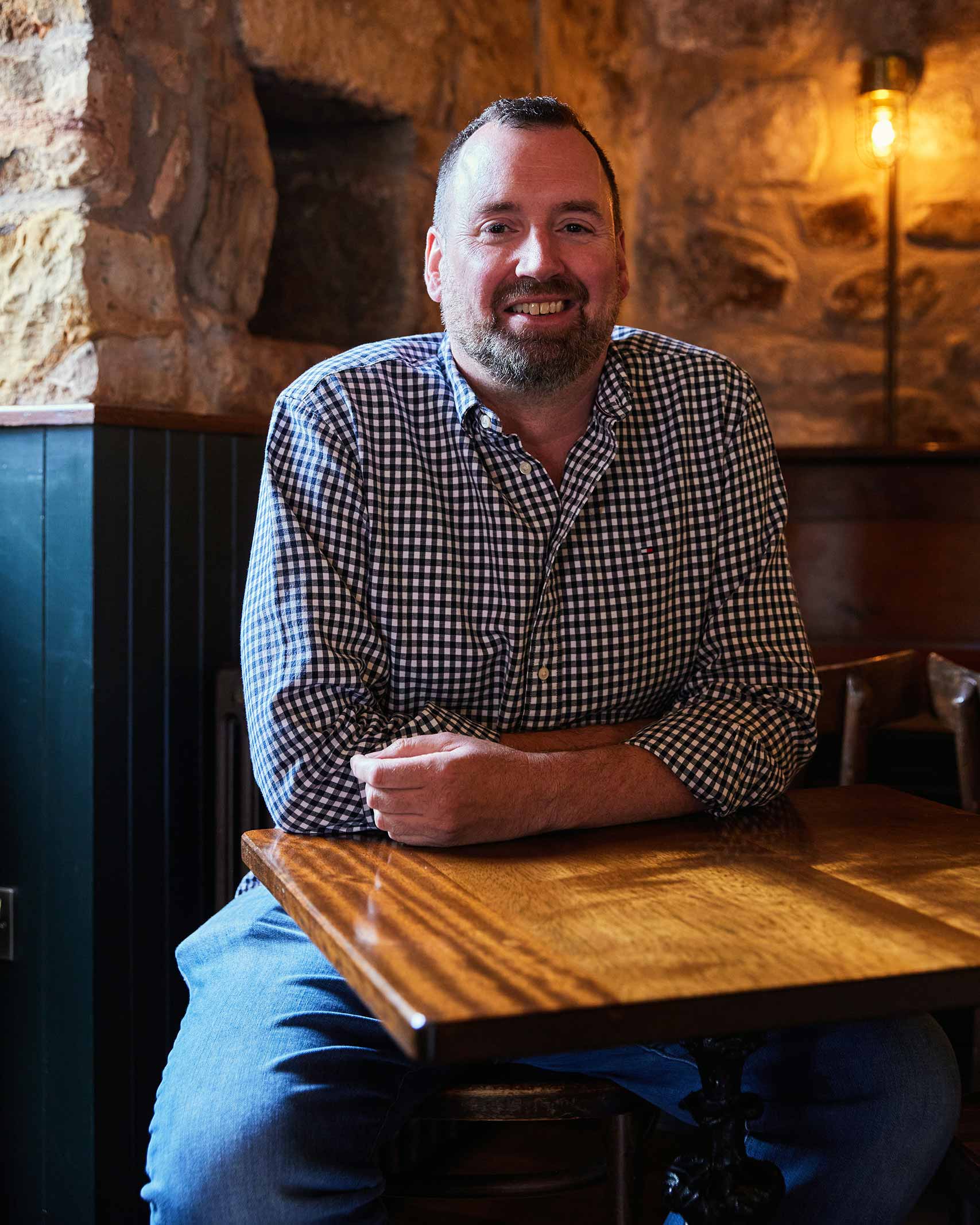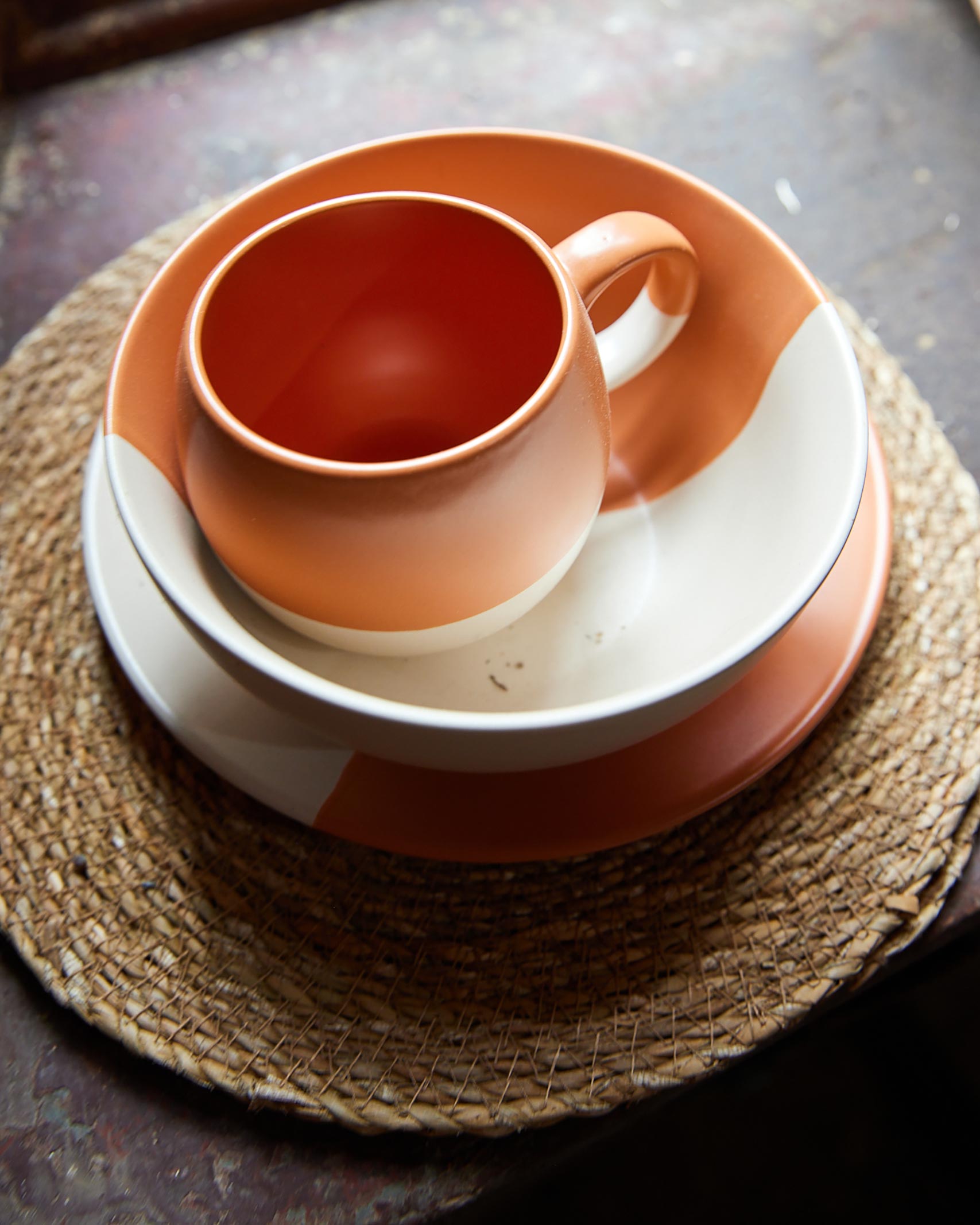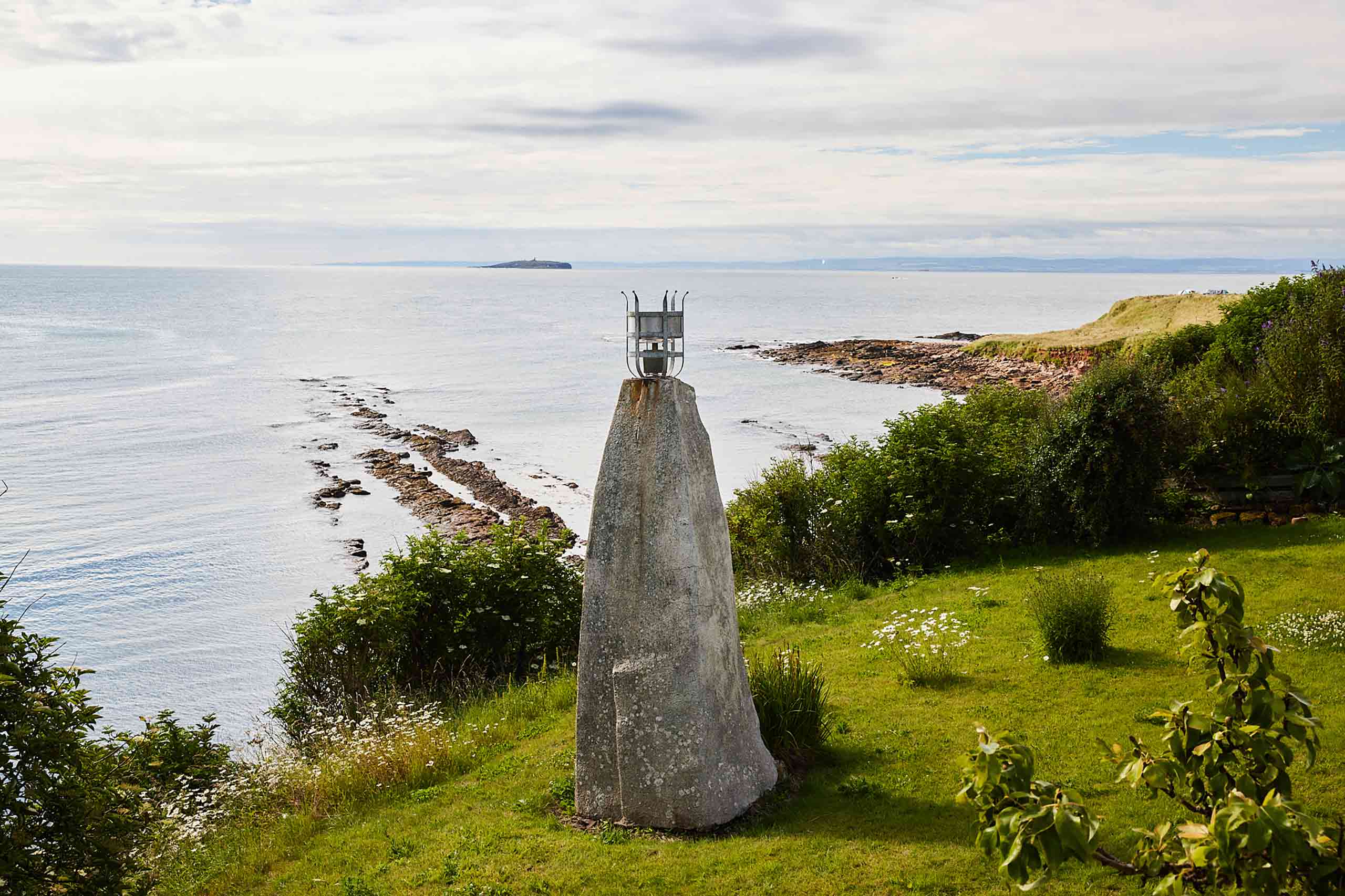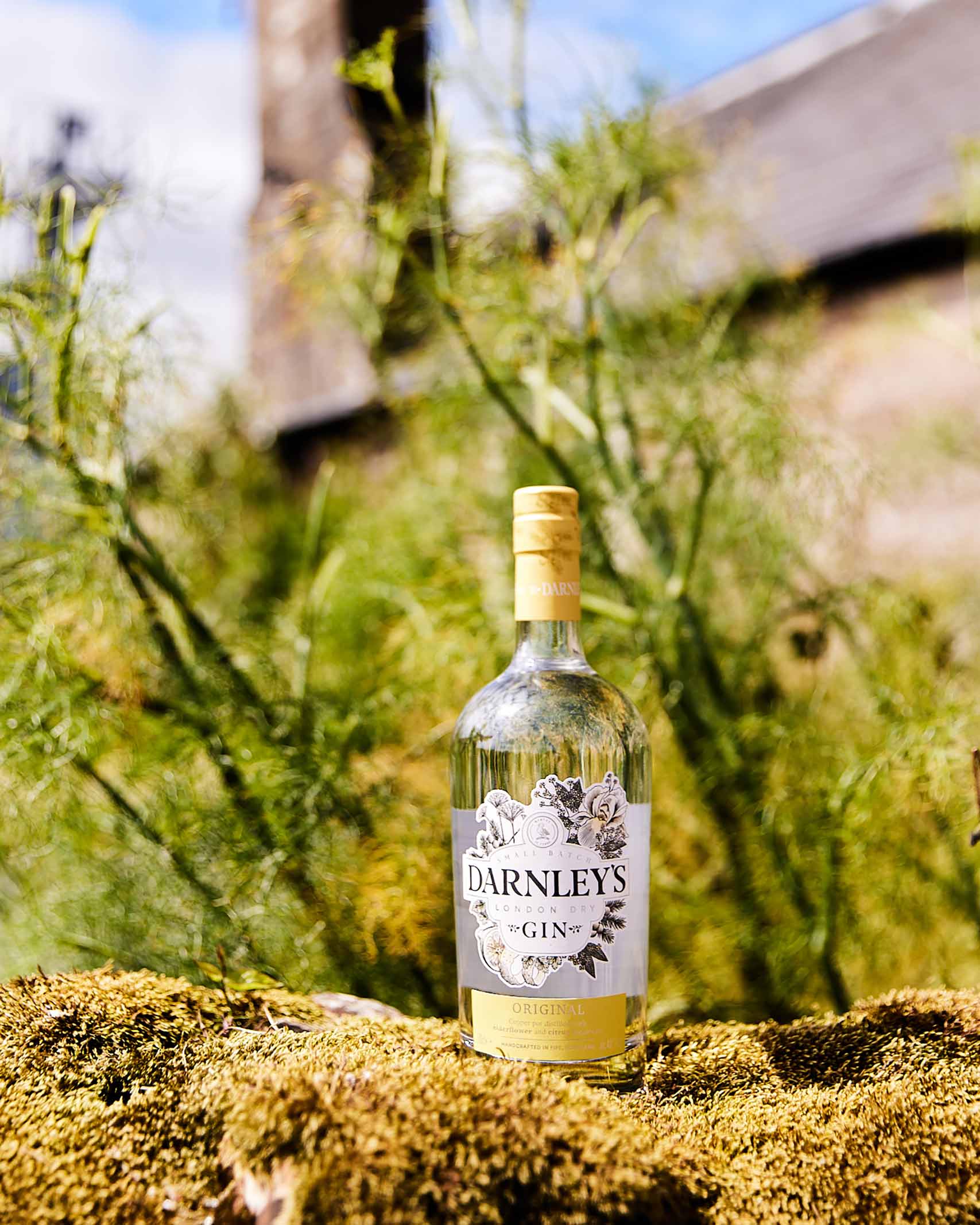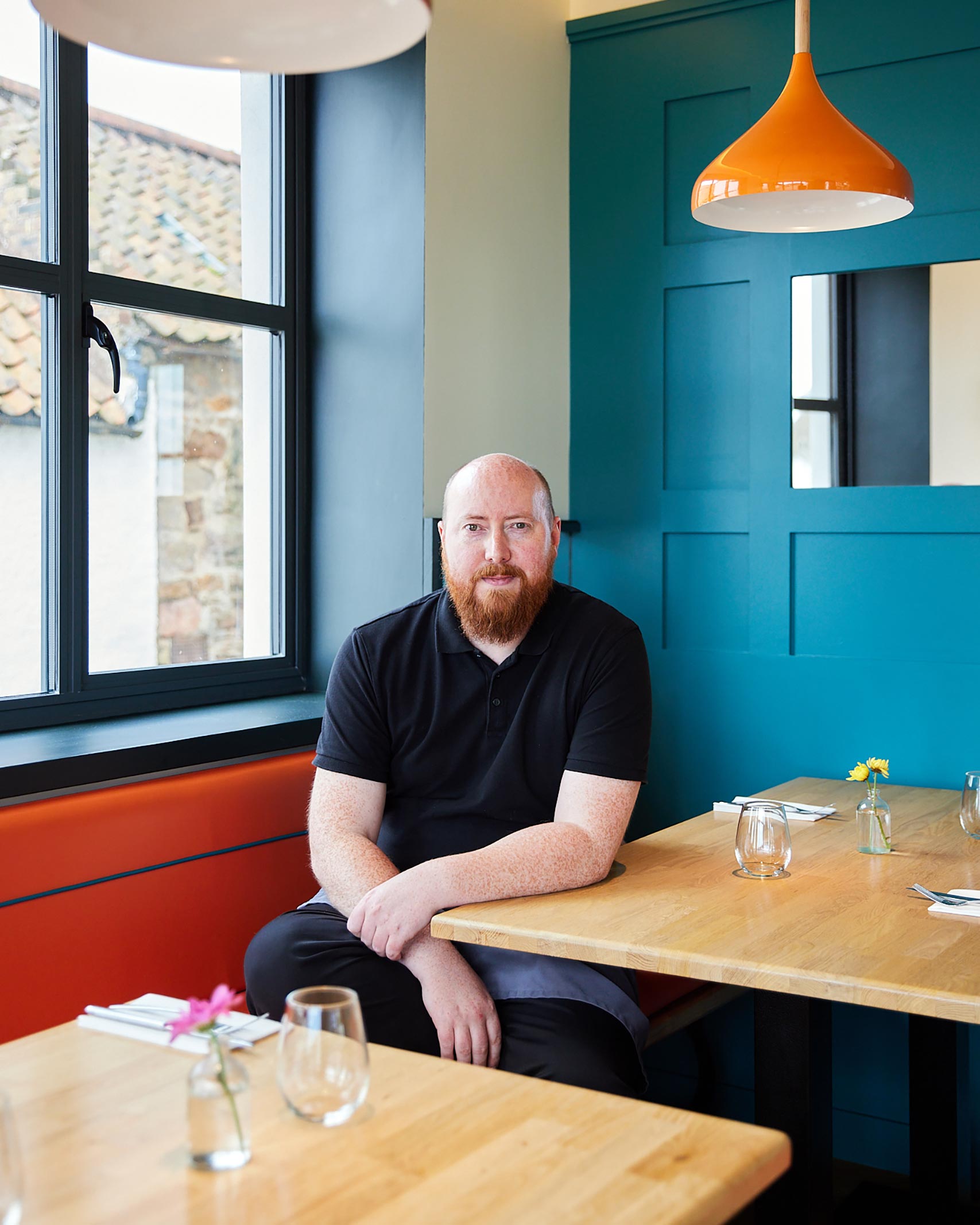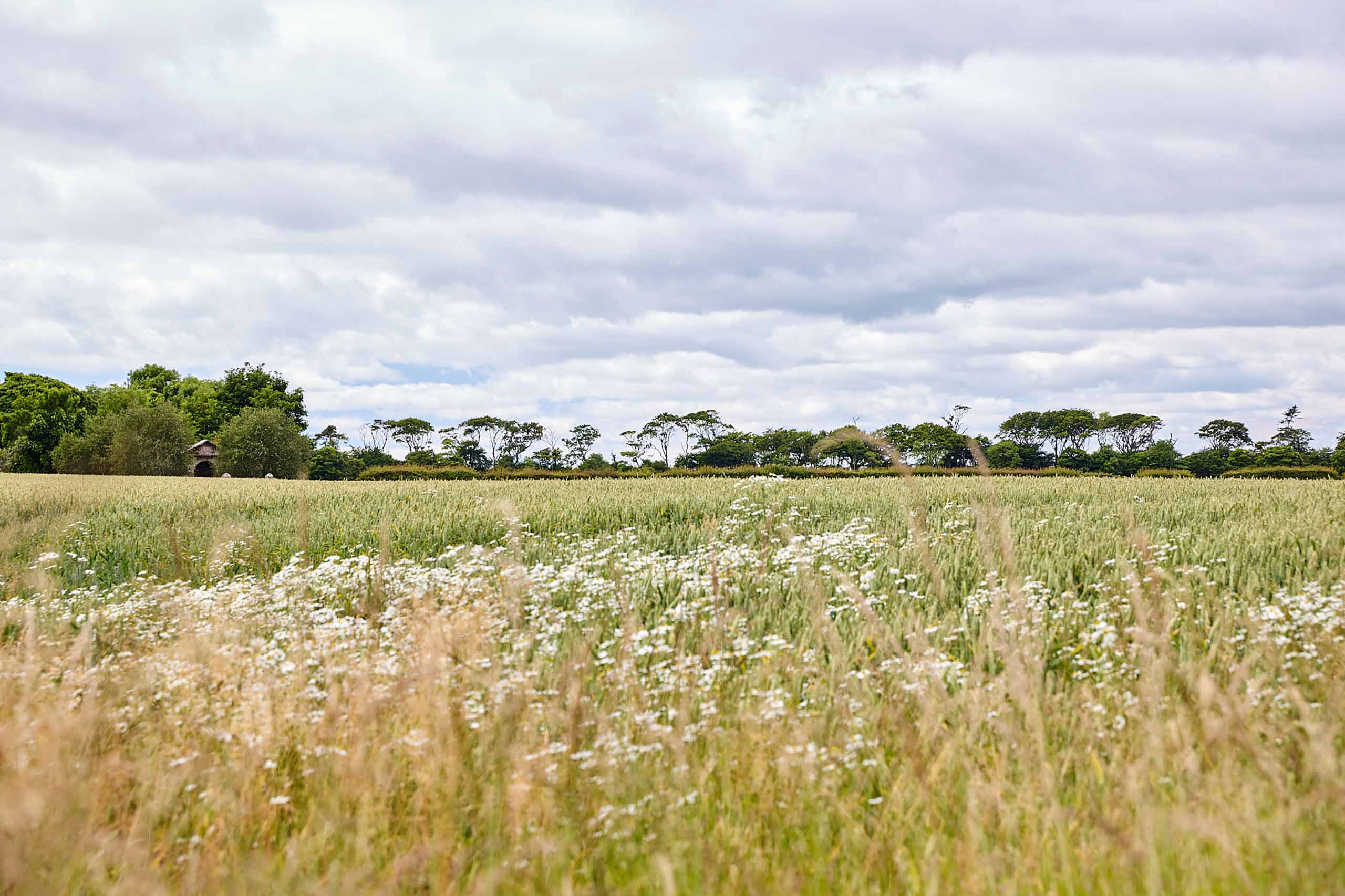Part-time residents for years of the former fishing village in Scotland’s East Neuk of Fife, Nicholas Frost and Damon Reynolds were told their plans to launch a mould-breaking new inn there were ‘nae for Crail’. But with The Shoregate, their stylish, community-forward vision is winning through.
“There’s a bit of quirky 16th-century Scottish history attached to the Dreel, the stream that runs through the village of Anstruther just down the road,” says Nicholas Frost, an impish glint in his eye. “It’s said that James V was touring his kingdom incognito, and when he got to the Dreel, decided he couldn’t walk across it. So a lusty local laundress carried him over, and when he rewarded her with gold, she gave him a blessing.
And that blessing was later the motto of…” – Nicholas’s eyebrow edges ceilingwards – “…a very particular kind of gentlemen’s club, that met for more than a hundred years in the village.”
Further investigation reveals that said laundress reportedly bid her monarch, “May your purse ne’er be toom, and your horn aye in bloom”. And the club? A secret society formed two centuries later whose (ahem) membership of lairds, merchants and ministers would convene twice yearly to boozily enjoy phallic exhibitionism – a silver platter on which new recruits would present their parts for peer inspection is held to this day at the august University of St Andrews – and other priapic entertainments.
It’s hard to imagine a more fitting setting for such an anecdote than The Shoregate’s cosy bar – with its low ceiling, reclaimed wooden chapel pews, flickering fire and exposed sandstone walls. Nicholas and his husband Damon Reynolds opened the historic inn with restaurant and rooms in May 2022 in the picturesque former trading port and fishing village of Crail, a couple of hours’ drive northeast of Edinburgh. With a year-round population of around 1,200, Crail is set in the part of Fife known as the East Neuk, a region rich in rambling private estates rolling out from stately country houses and quaint seaside villages that attracts golfers, ramblers, birders and, increasingly, foodies. And – over exquisite gimlets made with local craft gin and beaded with fat drops of emerald-green basil oil – Nicholas’s yarn is just the beginning of an immersion in local culture, old and new.
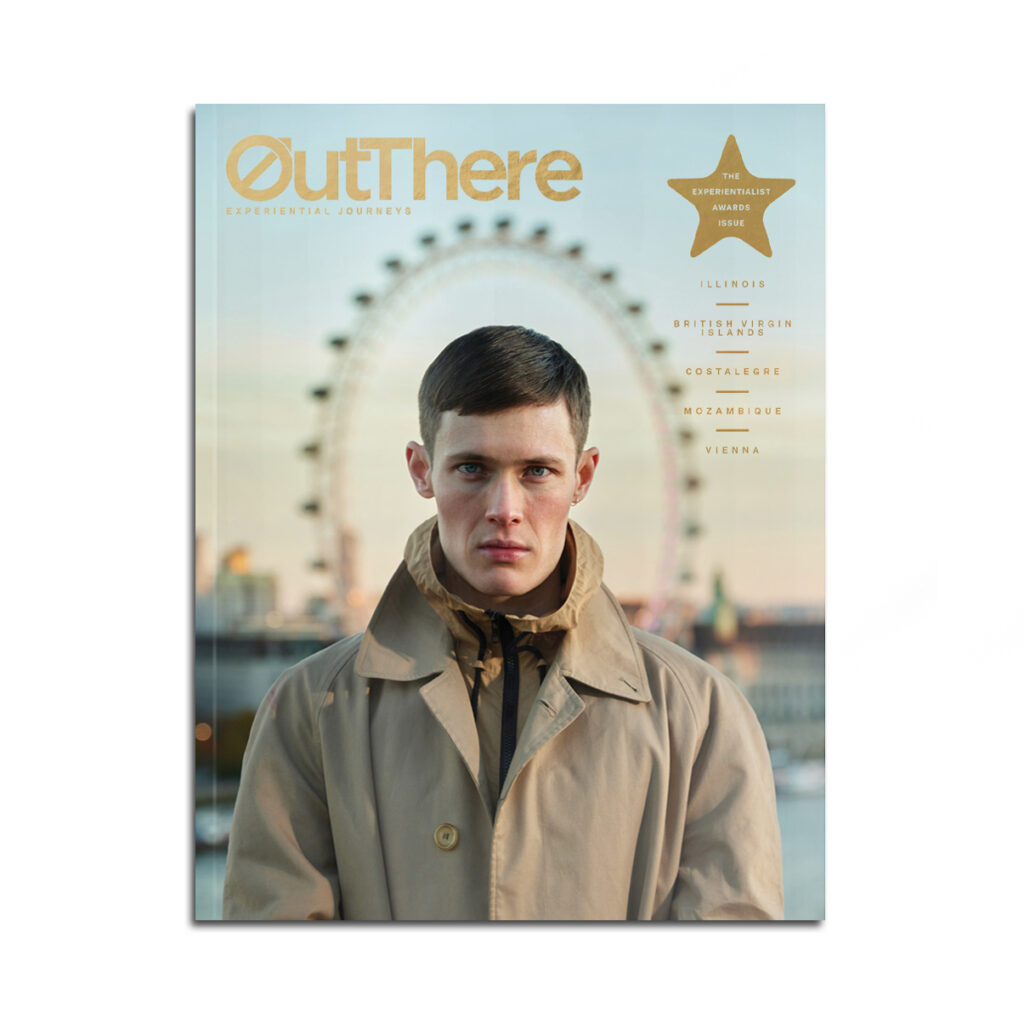
This story first appeared in The Experientialist Awards Issue 2025, available in print and digital.
Subscribe today or purchase a back copy via our online shop.
For module two, he and Damon lead me to the inn’s restaurant, a simple, stylish space with huge windows facing down Shoregate, a street of cute, beautifully kept fishermen’s cottages in the village’s West End, which slopes down to a scenic 16th-century walled harbour – the most photographed on the UK’s east coast, I’m told – and the North Sea. The room hums with the chat of diners, many of whom greet our hosts with big smiles. Friendly young servers bring more gimlets while we peruse the menu of elevated but unpretentious modern Scottish fare created by Glaswegian head chef Craig McAllister, formerly of Edinburgh five-star hotels Prestonfield House and Number One at The Balmoral, and an exceptional dinner begins.
Keen to sample as much as I can of the outstanding local produce I’ve been reading about ahead of this trip, I start with gravadlax with smoked mousse, a dill emulsion and Hendrick’s-gin jelly. I struggle to recall eating more succulent seafood, before my starter’s all but eclipsed by my main of sea trout on a bed of mashed butter beans, which, crowned by two plump prawns crusted in herb-green breadcrumbs, looks for a moment too good to eat. It very soon proves otherwise, however, and is another masterful dish. And although I’m beyond sated with a few mouthfuls of Damon’s excellent dessert recommendation, a sticky maple tart with caramelised orange and pecan crème, Nicholas’s pleasure in pressuring me to sample the Minger, a delicious, strong cheese from the Highlands, is too much to resist.
Born and raised in south London, Damon has known the area since he was a baby, when he made the first of many summer visits to his grandparents in their cottage at 17 Shoregate. Years of happy holidays rockpooling, exploring the coastline’s many sandy beaches and visiting the nearby National Trust properties Kellie Castle and Falkland Palace cemented a deep attachment to the place, and in 2016, 25 years into a highly successful career as a brand and web design consultant to the emerging generation of digital banks, he bought a house on Shoregate with his mum.
Three years later, Damon heard that the East Neuk Hotel, as The Shoregate was then called, was up for sale. “I phoned Nick,” he recalls, “and said, ‘Here’s a funny thought. You know in our travels around the world we’re always saying in restaurants and hotels, “This could be really nice if only…” Well, how about we buy the hotel, do a light restoration and have another fun thing to do when we come up to Crail?’”
In the 28 years since he and Nicholas met, they had maintained an often-long-distance relationship, with Nicholas establishing a high-flying international career managing sexual and reproductive health projects for development organisations in the UK and the Americas. With their home base in Wandsworth, both were by now thinking of downsizing their workloads, and Project Crail was on.
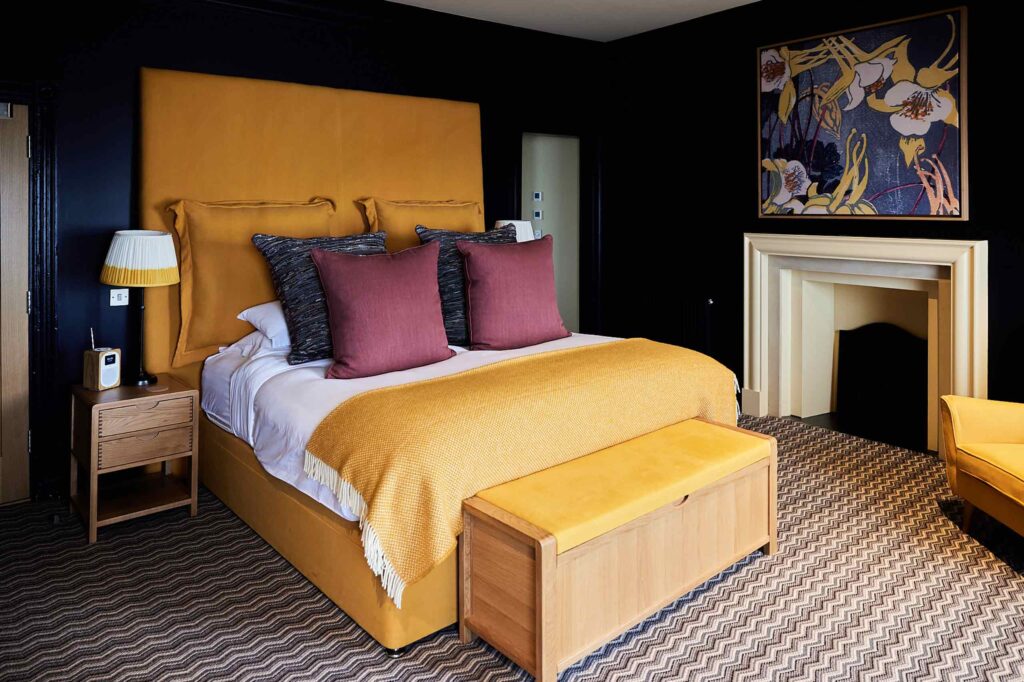
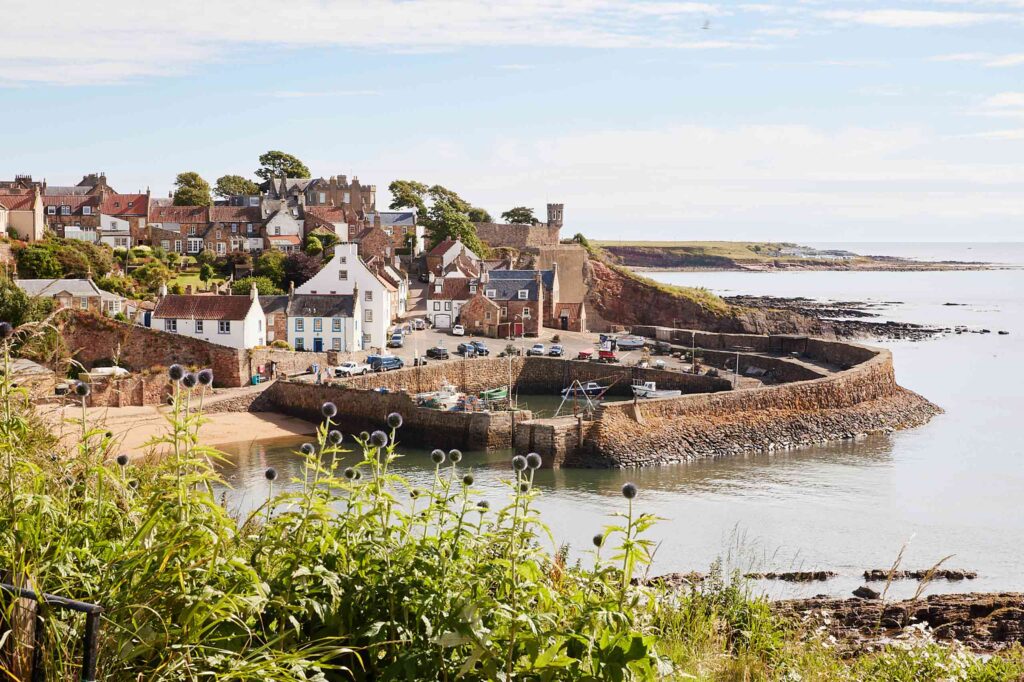
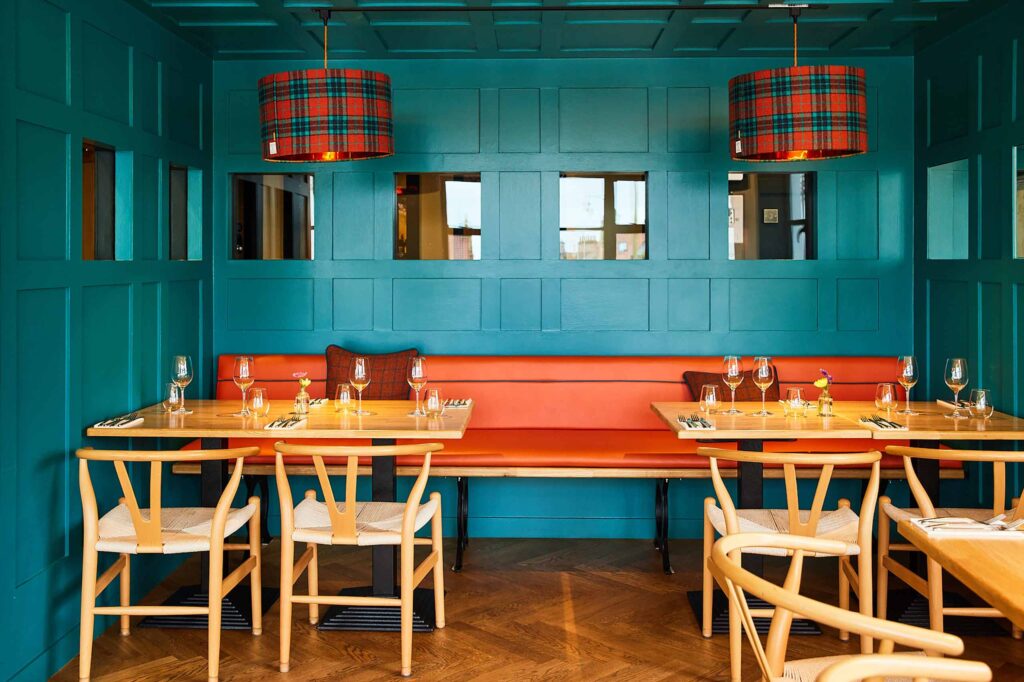
From the start, Nicholas and Damon had a clear vision of what they wanted to create – and what they did not. Both are deeply conscious of the fate that has befallen many seaside towns, whose well-kept looks say more about the wealth of those whose holiday homes and/or Airbnb properties now account for more than half of the housing, and whose residents, against a broader backdrop of disinvestment in Scotland, and whose communities’ traditional industries have all but died out, must rely disproportionately on tourism’s precarious whims, or move away from home to find work.
“There was a real chance of the hotel being bought and converted into four holiday flats,” says Nicholas. “We could have done that, which would have made more financial sense on so many levels. But once you’ve done that, you’ve kind of killed this end of the village. There would be no reason to come here. We feel very lucky that we have a home in Crail, and we wanted to give something back.”
A handsome mix of former fishermen’s cottages and historic merchants’ houses, many of whose crow-stepped gables bear witness to its medieval importance in trade with the Netherlands and as the site of Northern Europe’s biggest Sunday market, Crail is home today to an unusually large number of small independent businesses, three pubs with strong local trade among them. Joining this collection of sustainable community assets was a key priority for Nicholas and Damon, and at an early stage they began sharing with other business owners in the village their plans for community buy-in – recruiting locally, preferring local suppliers, staying open year-round and not just in peak tourism season.
“We know we’ll never be true Crailers,” says Nicholas. “But that we don’t rent out our house here when we’re away, and that we didn’t want to turn the East Neuk Hotel into flats were noted by the village, and we felt, kind of, part of the community.” That said, the well-travelled couple were also itching to bring something fresh and new to the village, informed by their broad travels and penchant for polished dining and, as they shared outline plans for an ambitious restaurant and luxurious new guestrooms featuring bold design, ‘that’s nae for Crail’ became words they got used to hearing from sceptical locals. Thoughtful, but undeterred, they stuck to their plan.
Some time before, on a drive out to Fife’s easternmost point Craighead, where manicured golf courses give way to glorious sandy beaches, a striking modern house had caught the husbands’ eye. Now contacting the architect responsible, whose location in St Andrews just 12 miles (19km) away made him ideally placed to interpret local building traditions and the area’s history respectfully, they began to see the ‘light restoration’ Damon had posited might need to be rather more involved. And while it had always been their intention to restore to its former glory the historic exterior of the hotel, whose oldest parts date back to around 1740, its C listing by Historic Environment Scotland added an extra layer of scrutiny. (An issue with matching original slate roof tiles, with Scotland’s last slate quarry closed decades ago, was only solved when Nicholas and Damon discovered that a quarry in Cumbria mines the same seam.) And then, just as they were preparing to appoint building contractors, came Covid.
“Of course that slowed work down,” says Nicholas. “But we were actually very lucky with the timing. All the trades we used had most of the materials in stock, before prices suddenly shot up. Also, east Fife has quite a lot of skilled specialist contractors, who could, for example, renovate our slate roof and replace the cement render that had left one of our walls with about 10 years left to live with harling, a traditional lime mortar that’s expensive but effective – and true to the building’s original construction.”
“And what’s lovely is that the whole thing has been built by people who live no more than 15 miles (24km) from it,” adds Damon. Around 50 workers played a part in the renovation, with another 50 or so suppliers contributing interior-design elements, which wherever possible were commissioned or sourced within Scotland.
Nicholas and Damon also credit the pandemic with giving them time to think further about how they wanted their undertaking to benefit the local community – and have finessed their business model accordingly. “Nick and I both feel very strongly that companies work best when everybody has a stake in them,” says Damon. “So we recruited the two key roles, our head chef and our general manager, as directors, and we’re offering them shares each year, so they can potentially take over the business, with us just owning the shell they’re operating in,” adds Nick. “We left it to them to recruit their own teams too. Now 15 people, either from Crail or nearby communities, have work at The Shoregate, which means they can stay in the area, and all stand to benefit from a profit-share scheme.”
Finally taking two and half years, and a £1.2m outlay, the result is a bold and beautifully judged new expression of Crail and East Neuk culture, a pitch-perfect, style-forward modern take on a restaurant with rooms that defines its own harmony with its surroundings. The restaurant’s base palette of blond parquet, off-white walls and quietly hip Scandi-esque chairs and tables nods to no-nonsense Scottish spartanism, but is kept the fun side of neutral by judicious splashes of teal and orange, and quirky touches such as custom-made pendant lampshades in a vintage Harris tweed. Those huge, sea-facing windows beam not just copious daylight, but day-to-day Crail street life into the room, with the comings and goings of the 95 bus, which ferries locals and visitors between the neighbouring villages, a particularly engaging example.
Along the accessibility-adapted hallway in the bar, guests find exactly the kind of quintessential village pub you’d wish to know in a place prone to chilly evenings – albeit with an elevated drinks menu showcasing craft spirits and ales sourced from local producers, alongside wines from all over the world. And which hosts acoustic music jams every two or three weeks, should you wish to rock up with a guitar, or a song on your lips.
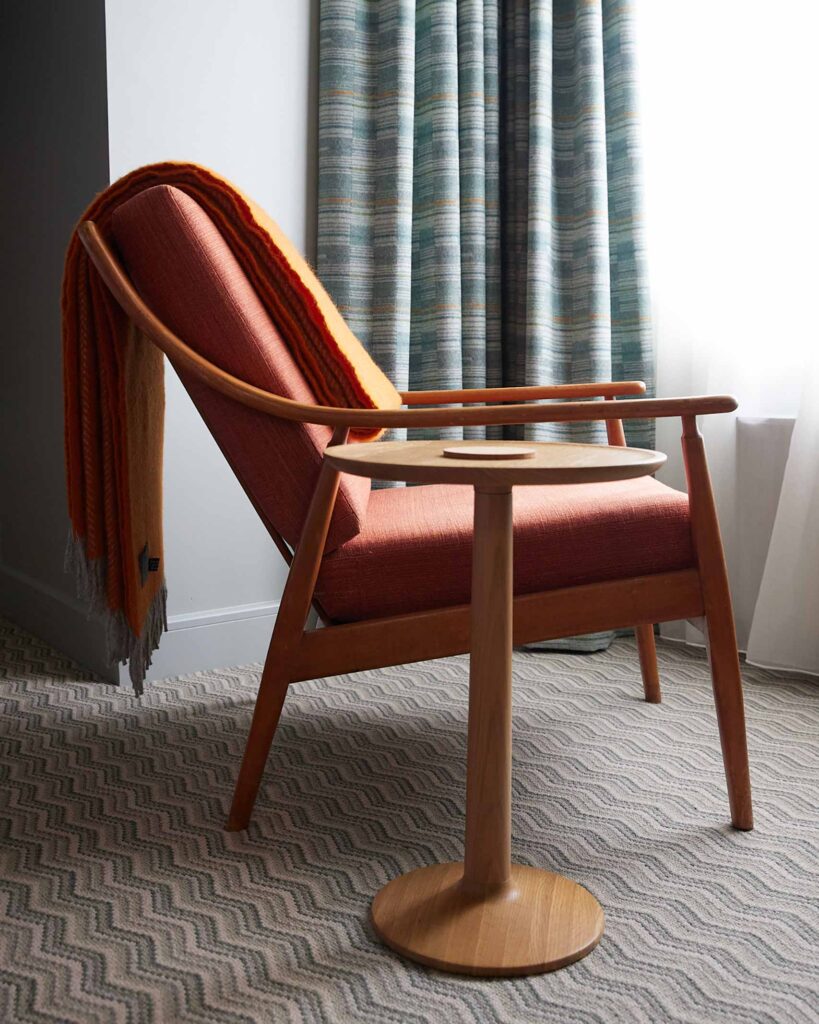
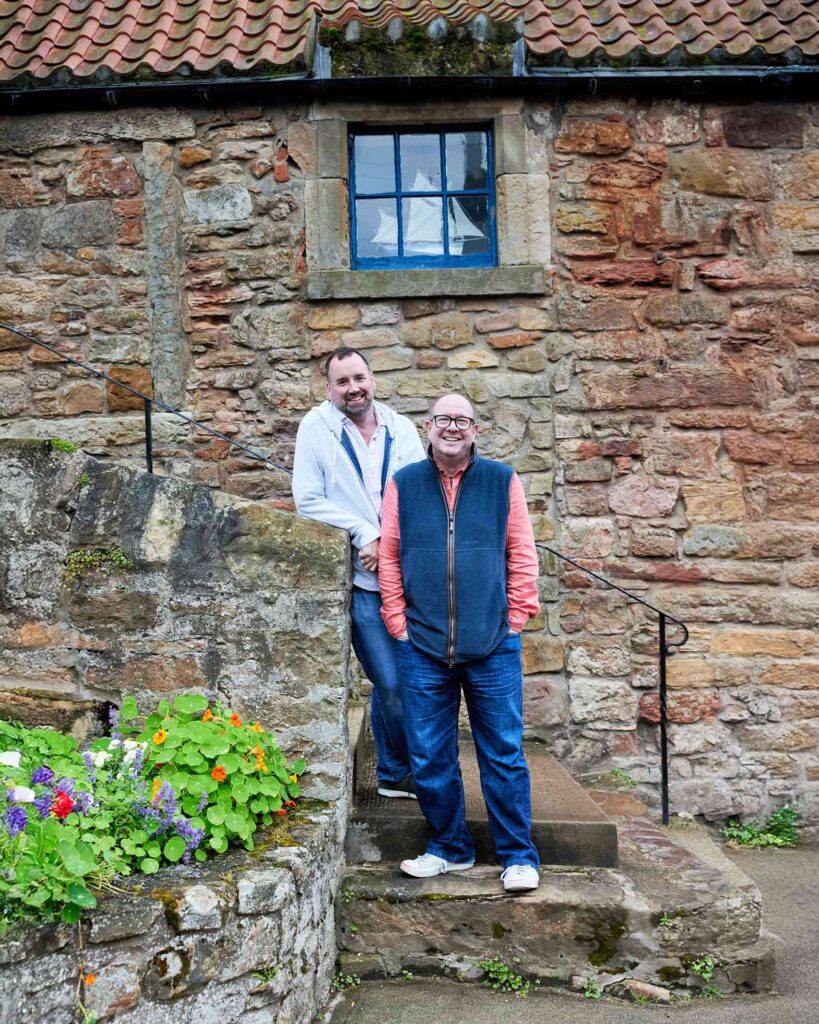
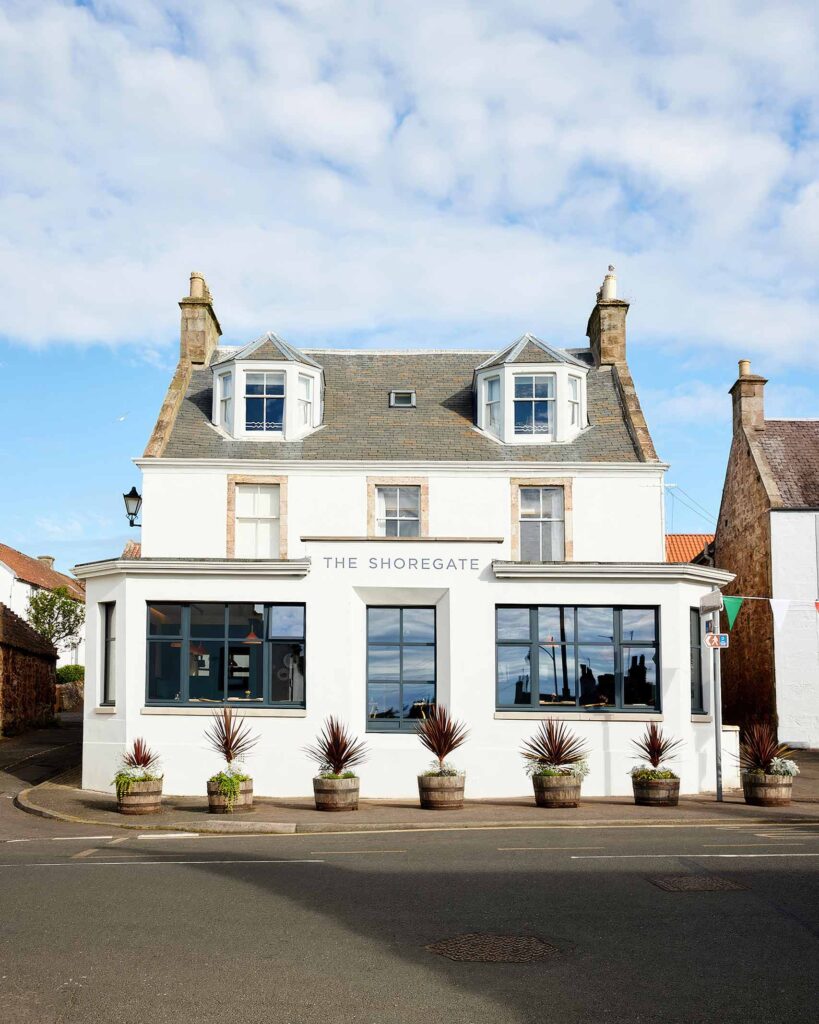
Upstairs, floorplans have been radically remodelled to convert eight guest rooms on the first and second floors into three luxuriously large double rooms and one suite with exposed stone walls and painstakingly restored original roof beams. While purposefully fuss-free, all are appointed with custom king- or superking-size beds (or twins on request) from Glasgow-based manufacturer Elite, made up with high-thread-count linens, and spacious, beautifully designed bathrooms. Here, colour schemes, unique to each room, are unabashedly rich, with walls painted deep blues and serene greens, further pops of vivid colour in tactile upholstery, blankets and curtain fabrics, and quietly funky artworks on the walls.
To the attuned, there’s a subtly camp sense of humour at play here too – from the beds’ headboards, so oversized they bring to mind Alice in Wonderland, and the gently homoerotic Paul Bommer artwork of a bare-chested, tattooed Scotsman in a hallway, to the monkey sculpture on the wall of the restaurant, and the guest wifi password ‘westendgulls’. And, of course, the phallocentric bar banter.
“Is The Shoregate’s look Scottish?” says general manager David Fussell, a New Zealander who’s settled in nearby Guardbridge. “For visitors’ perceptions of Scotland as a whole, maybe not so much. But in the context of this artsy, creative area? Is it Crail? Is it Fife? Yes. So yes, it’s Scottish. Very Scottish.”
And the inn’s rebirth could hardly have come at a better time, with the East Neuk powering a confident resurgence in artisanal, small-scale production, most notably in food and drink. “There’s so much great produce in Scotland now, and people are generally so much more interested in provenance and what’s on their doorstep, that there are loads of local producers we can get amazing ingredients from,” says head chef Craig McAllister.
Nicholas and Damon take me on a brief safari of the scene, first cadging a taste of the exquisite oak-smoked salmon produced by East Neuk Kilnhouse in nearby St Monans while its staff hand-prepare fresh catch for the kiln. Next, we swing by Bowhouse, a hub for small food producers in a cluster of artfully repurposed barns on the Balcaskie Estate, whose merchants include funky ferments brand Angrykulture, East Neuk Market Garden, supplier of veg and microgreens to The Shoregate, and Futtle, an organic brewery which – attention, hipsters – also has a small vinyl records store with impressive lines in Detroit gospel, Brazilian tropicália and South African Kwaito.
Next, we drop in on Taran Guitars, a workshop crafting world-class custom guitars in a converted farmholding, also on the Balcaskie Estate, one of several in the area, Damon tells me, making newly progressive use of their land and resources to uplift independent local businesses and creatives. Their neighbours include the convivial artist Keny Drew, who created three stained-glass pieces in The Shoregate’s bar from original windows found on site, and who tells us about his collaboration with musician Kenny Anderson – aka the prolific indie artist King Creosote, who lives a few doors down from Nicholas and Damon in Crail. Other stops include Kingsbarns Distillery, a smart, 11-year-old operation in a restored Georgian farmstead producing lowland whiskies and gins, and the gorgeous walled gardens of Cambo Estate, whose woodland walks and magnificent Victorian country house are also open to visitors.
Back in The Shoregate’s bar, Damon points out some local patrons who have helped bring the inn to life. “At the bar, that’s Stevie, one of the joiners who built this place – and christened the paint colour in the restaurant Makita green, after his power tools of choice. Next to him is Keith, from the village butcher J B Penman, who supply us. And that’s Dave, our bar manager, in for a drink with his wife on his day off. I know it sounds sentimental, but that people who built and supply this place come in and enjoy it is just the best. It’s exactly what we set out to do.”
Photography by Martin Perry


